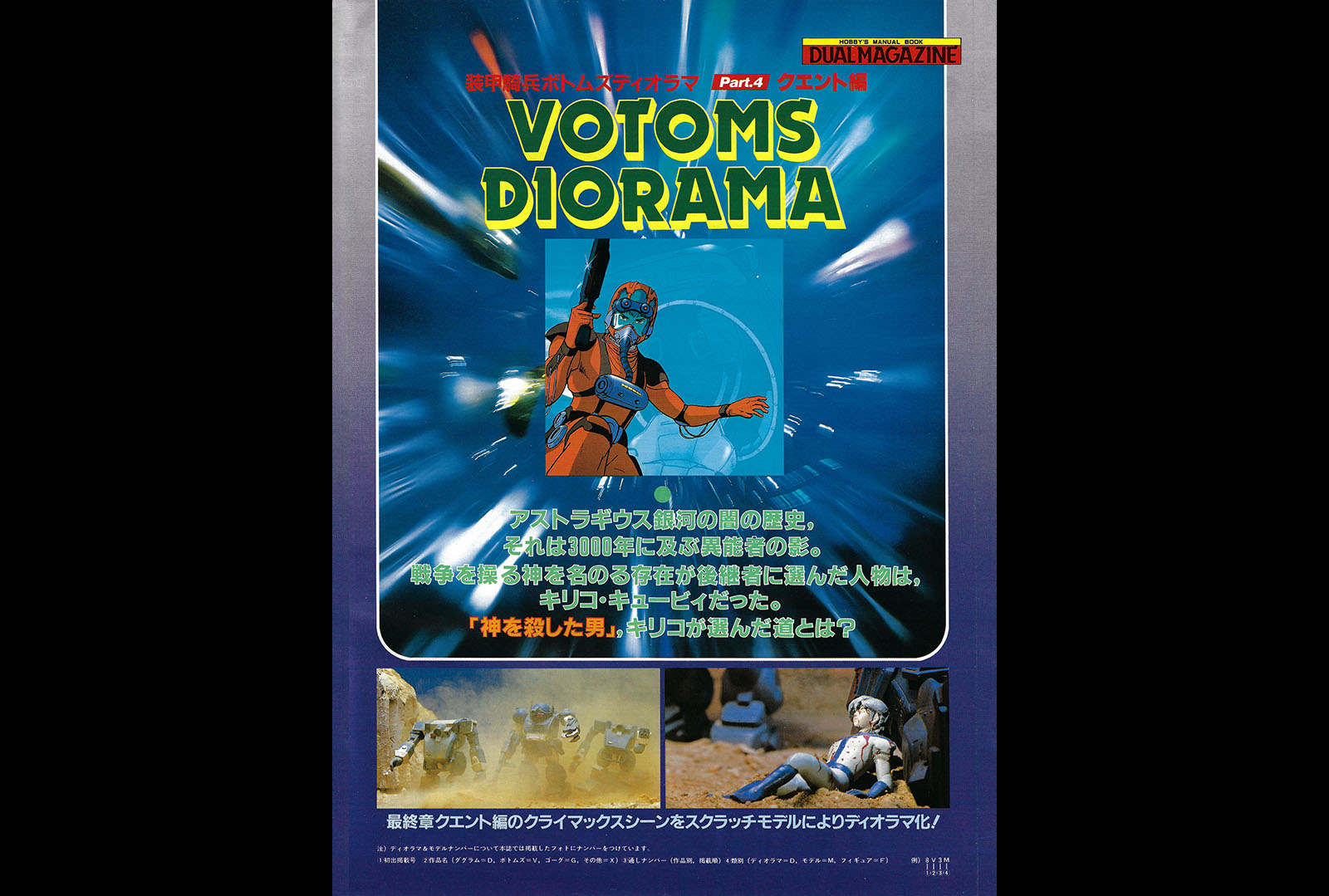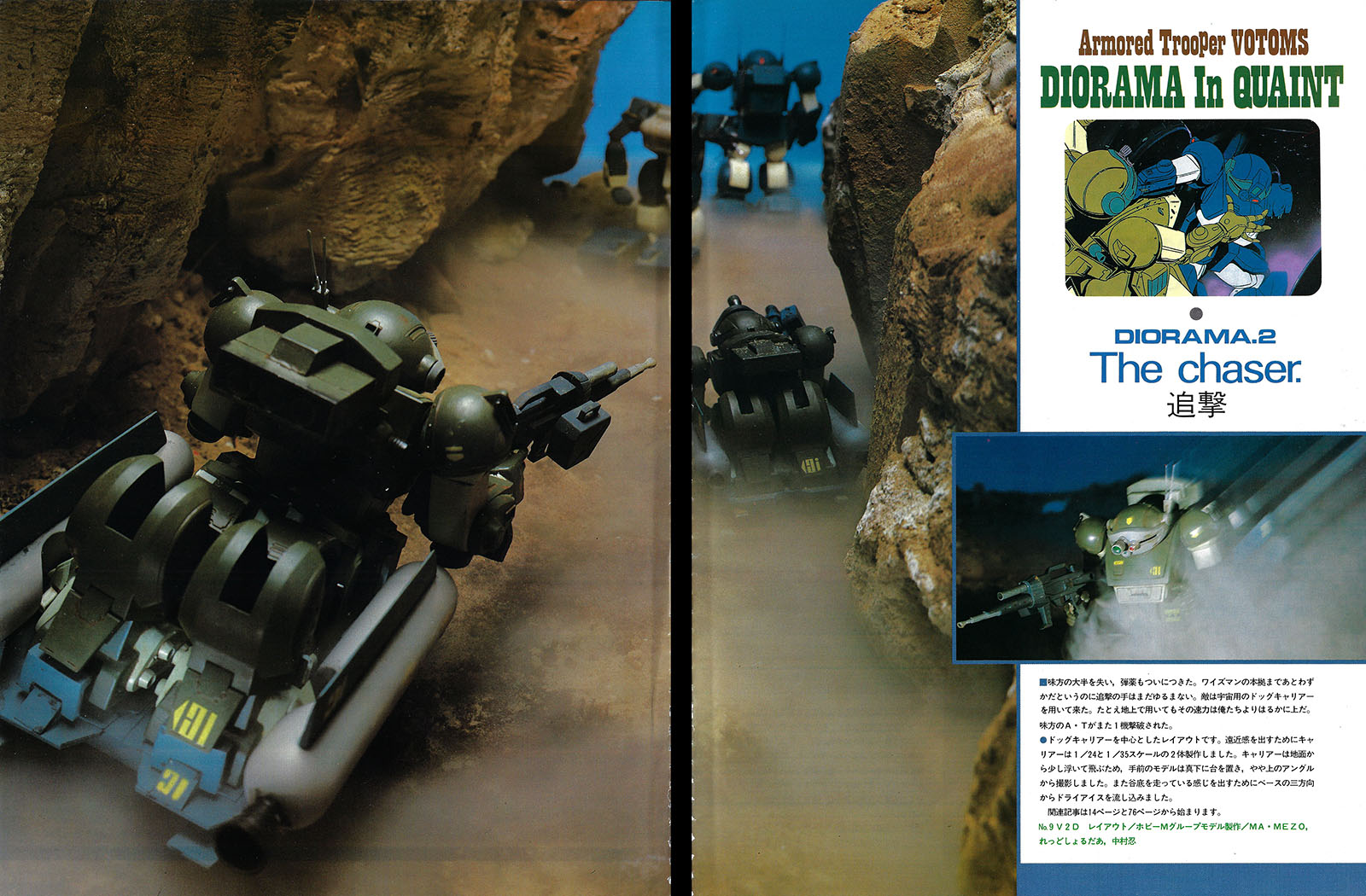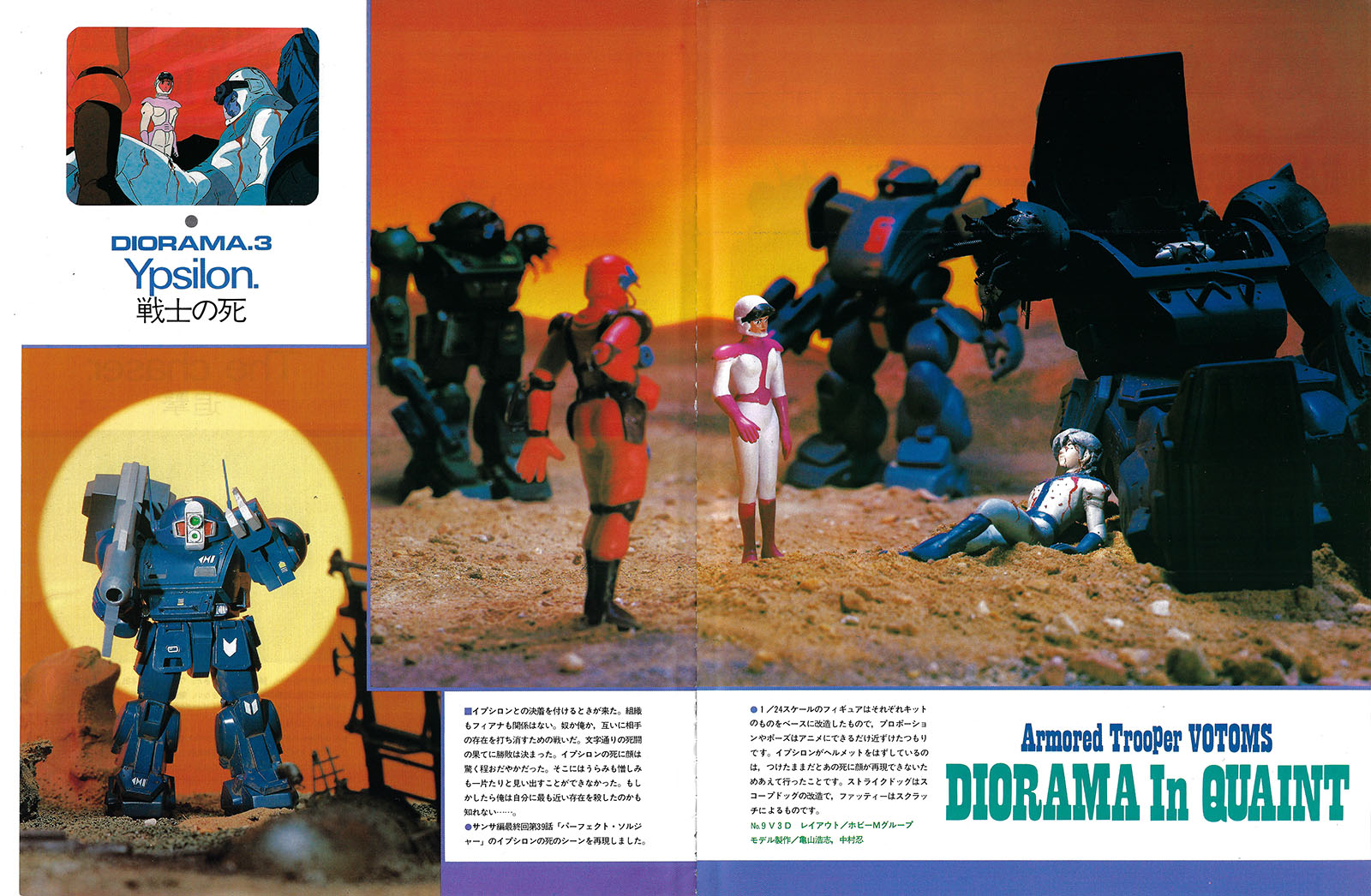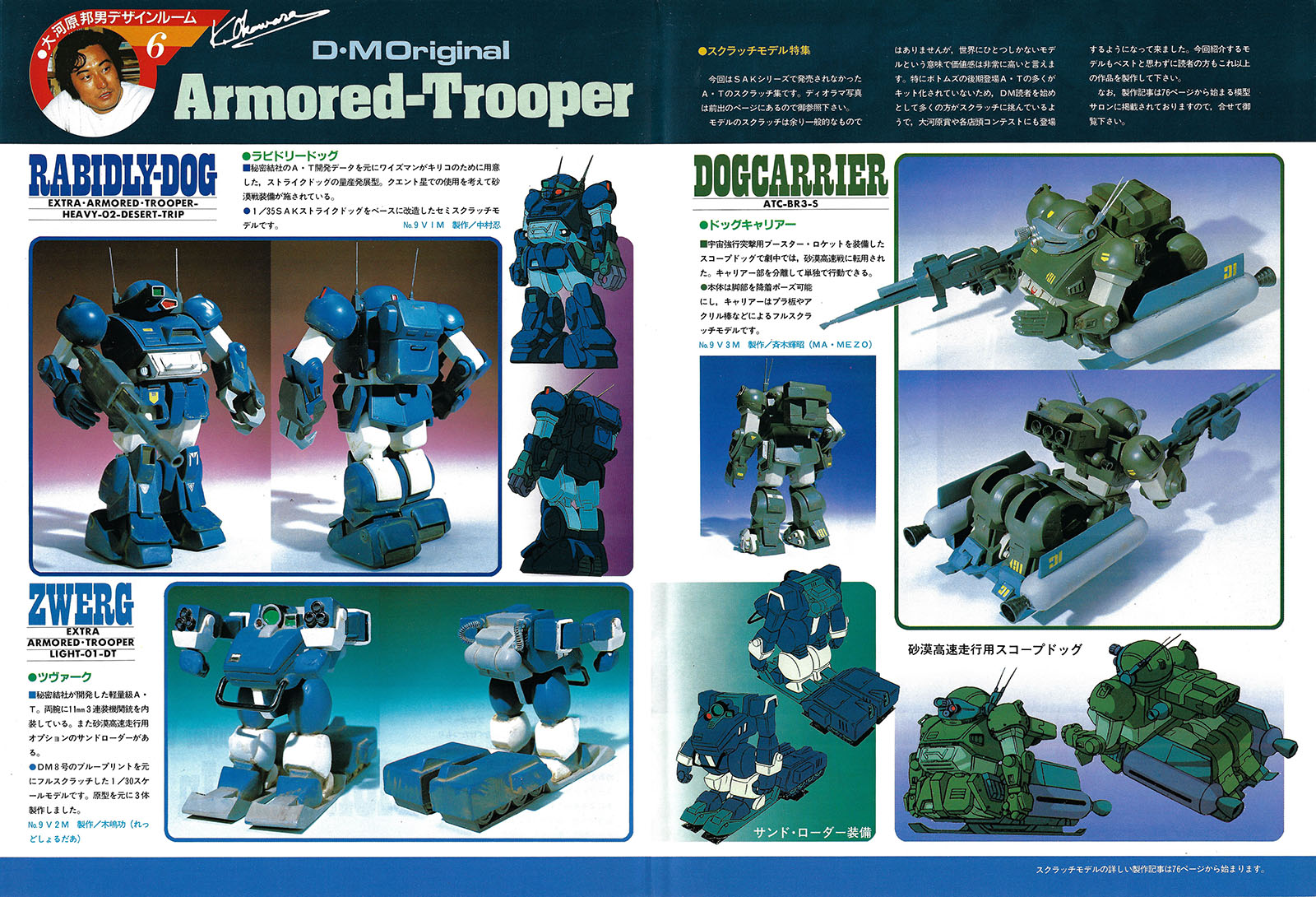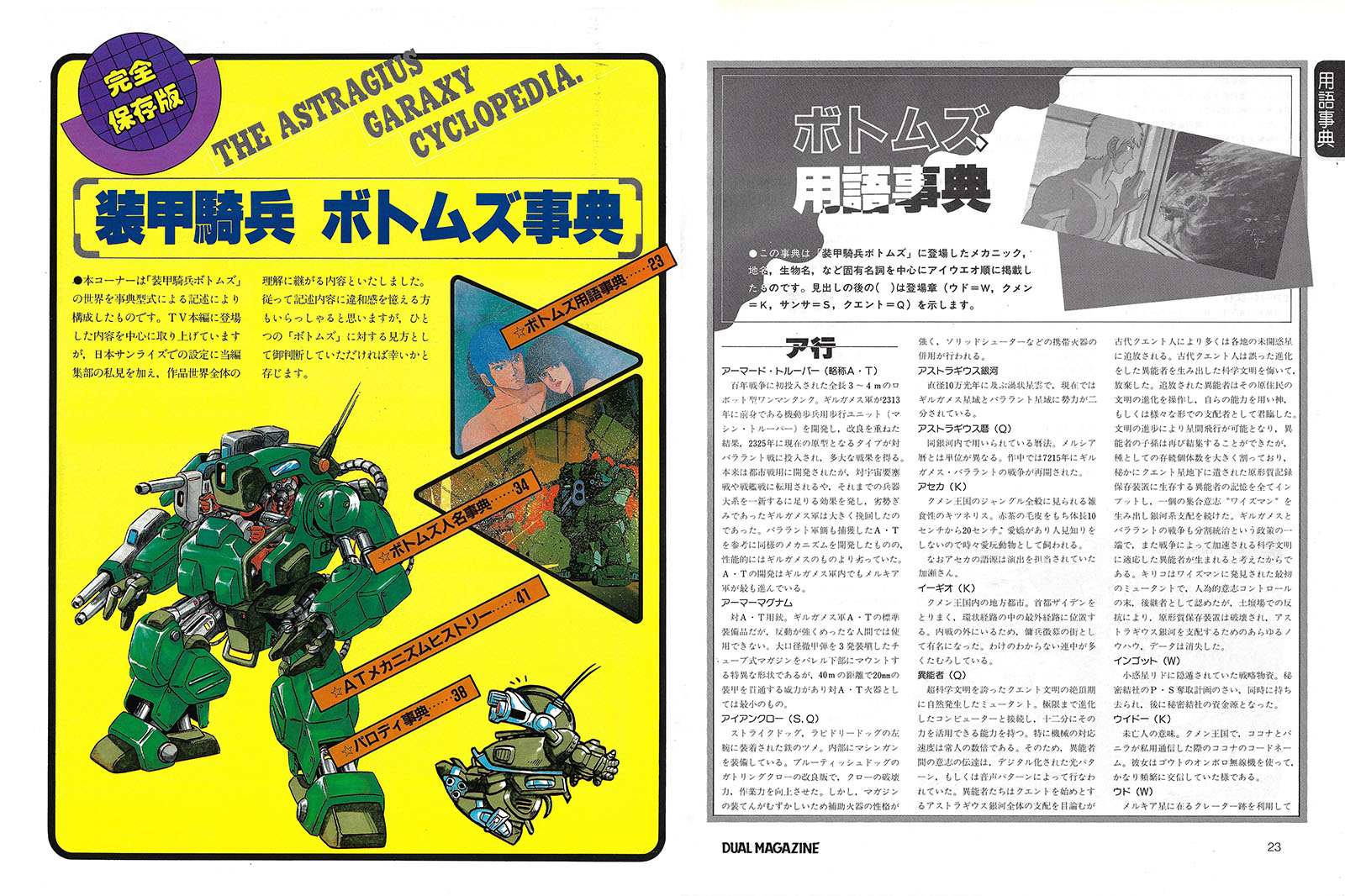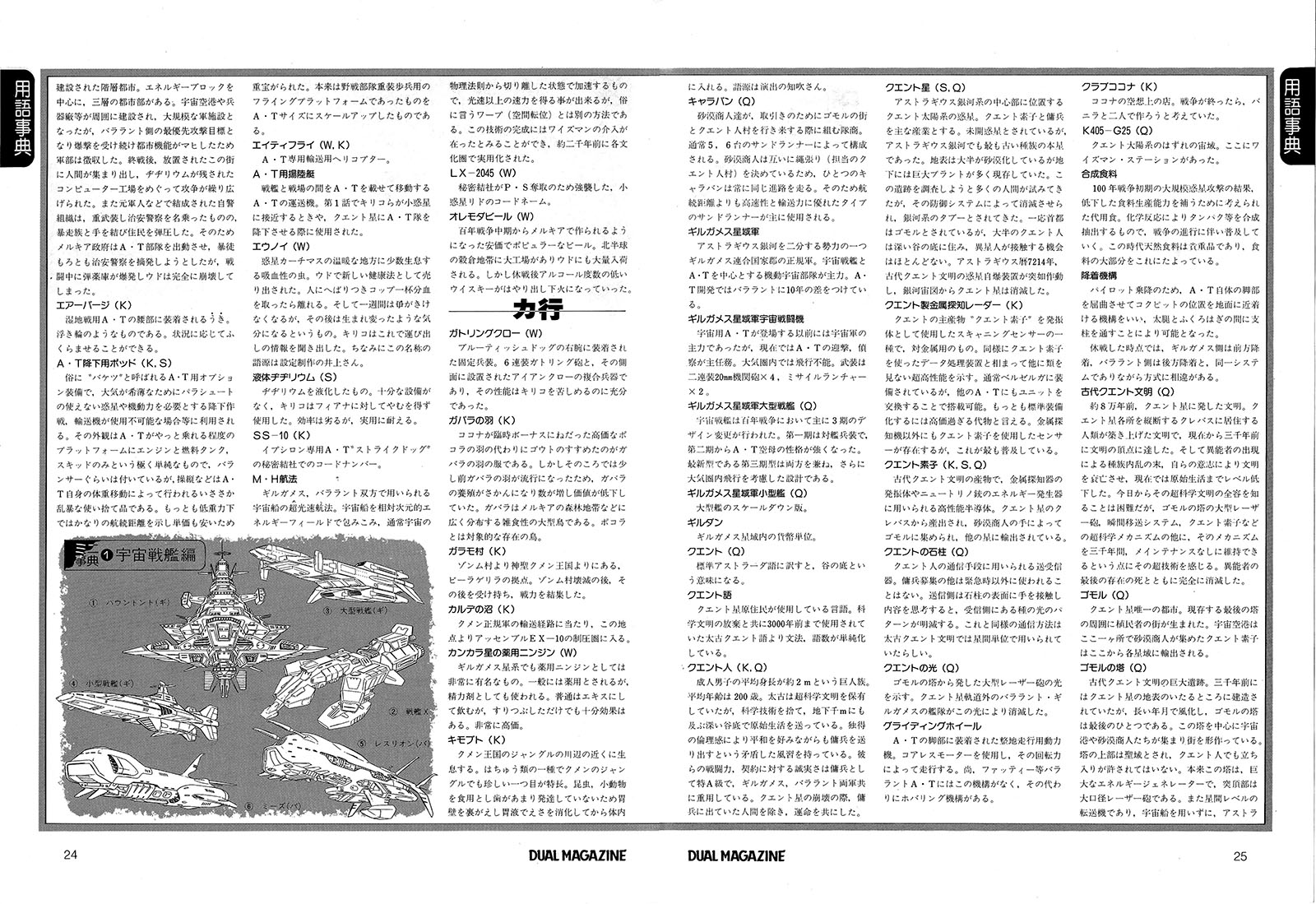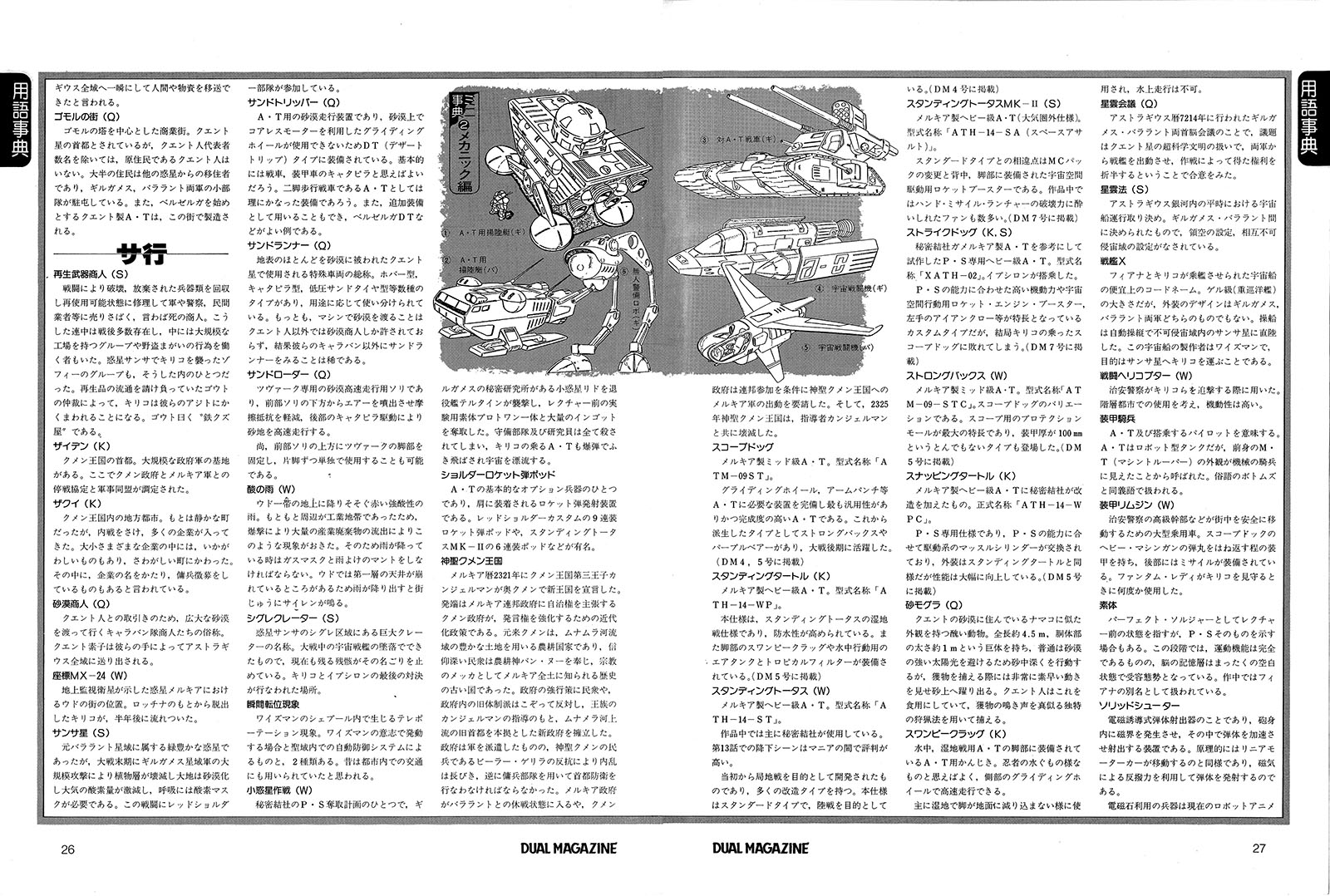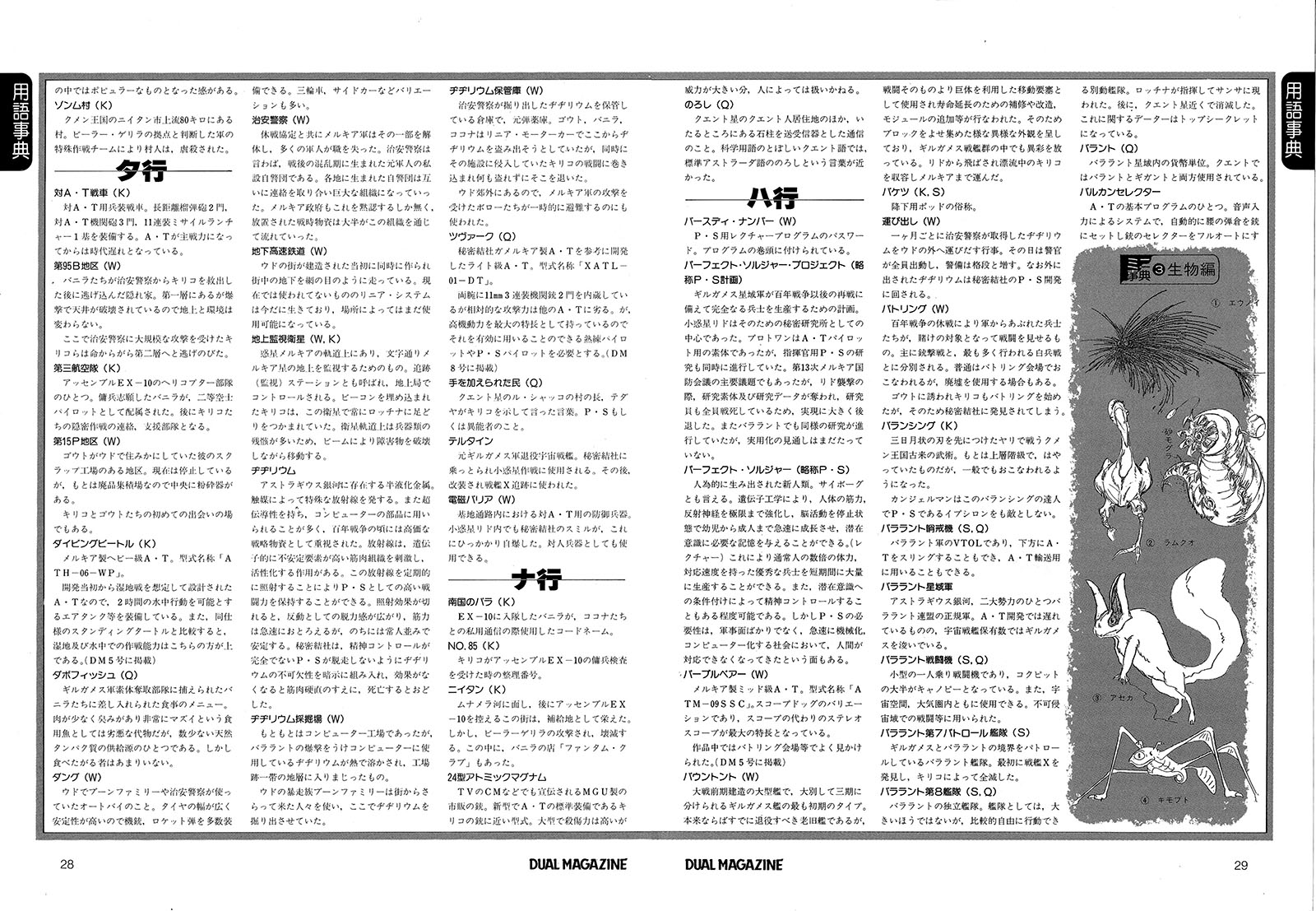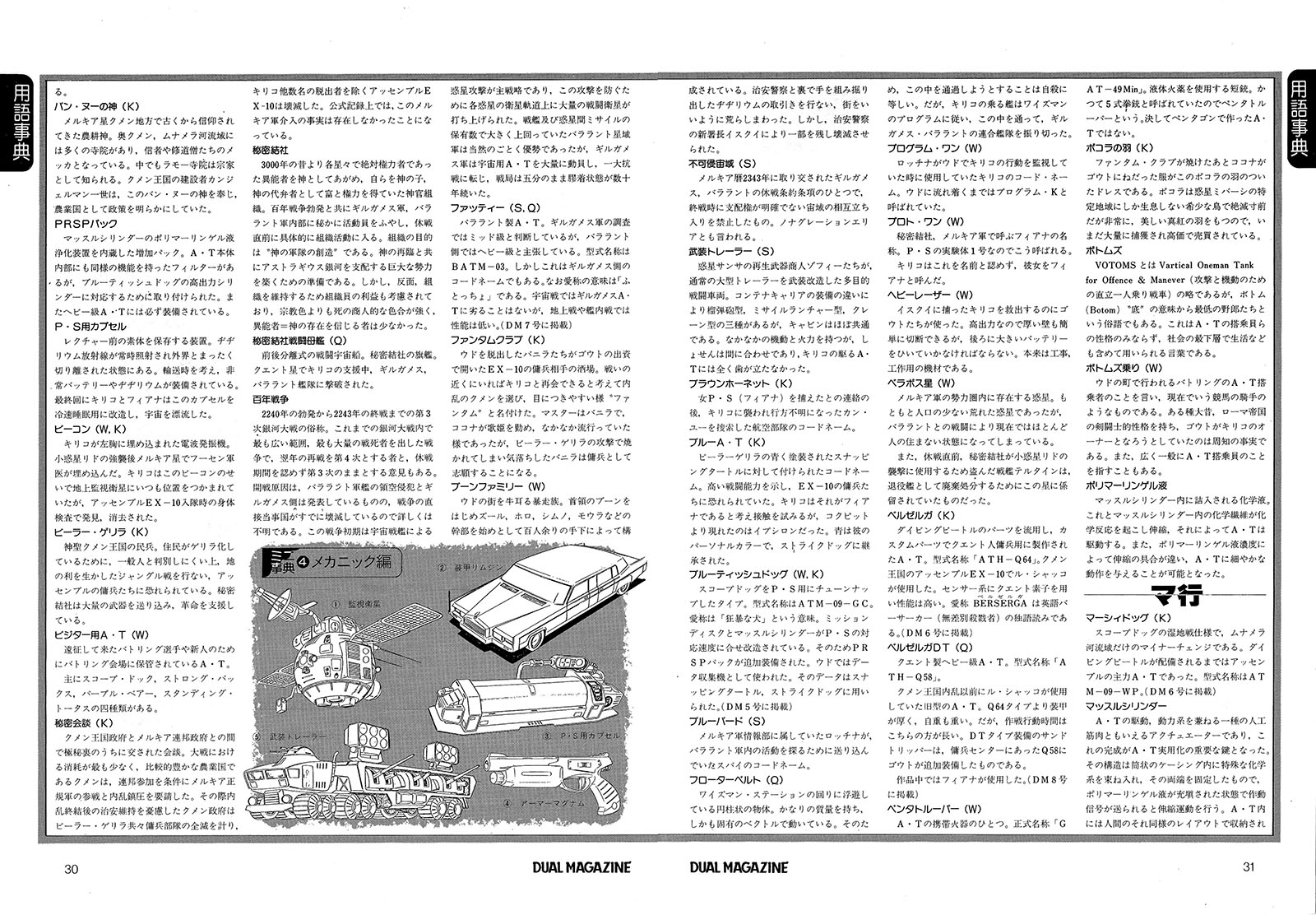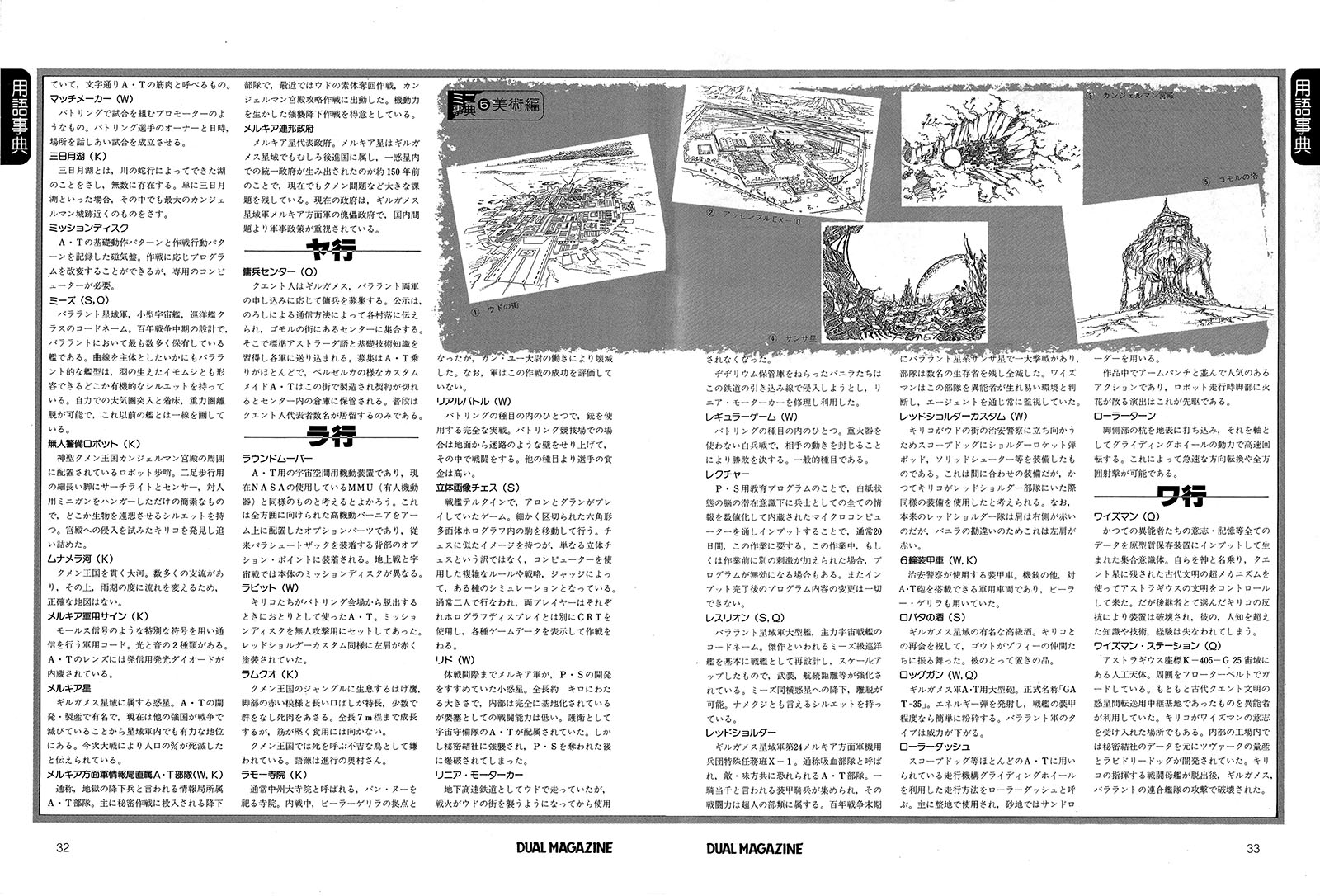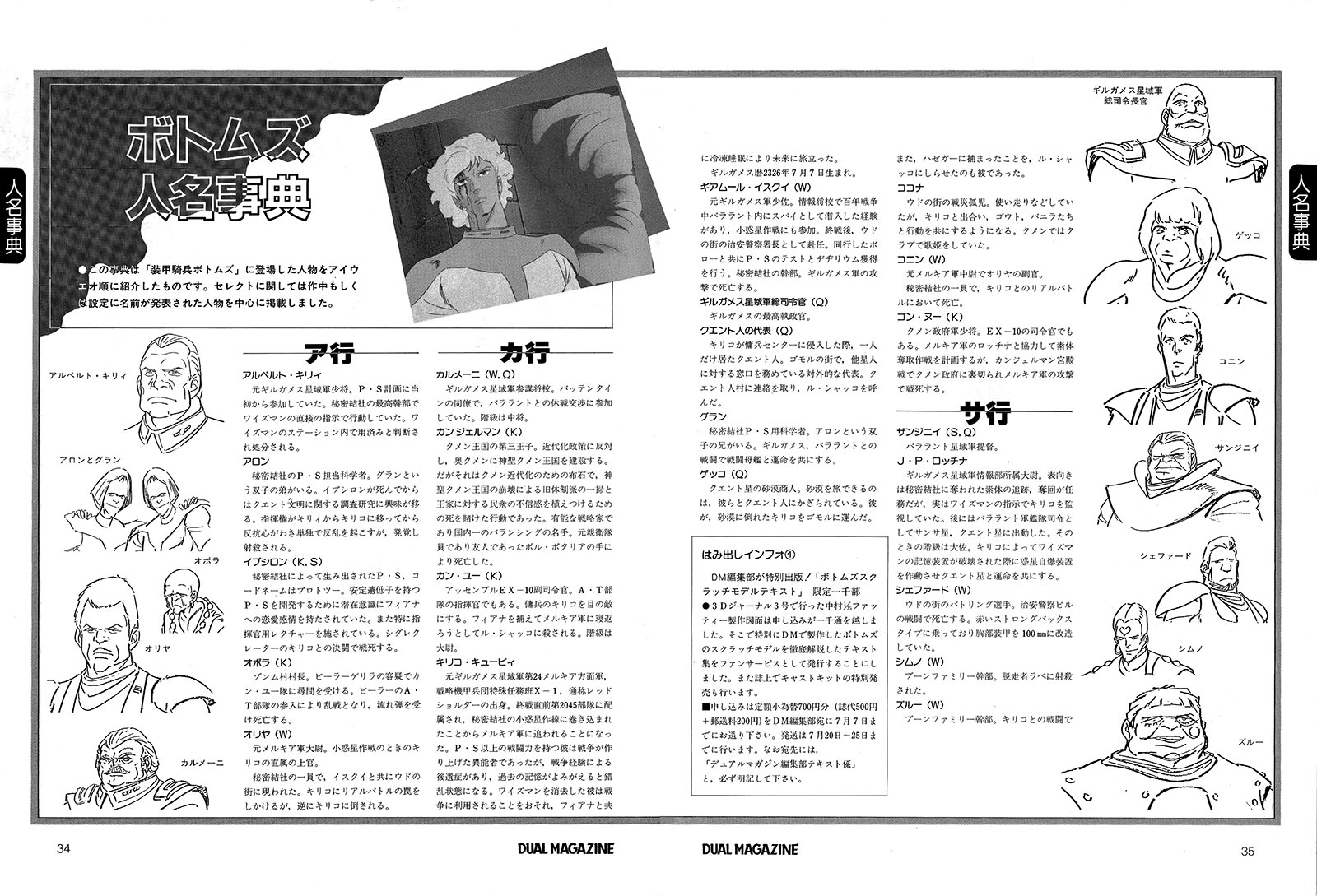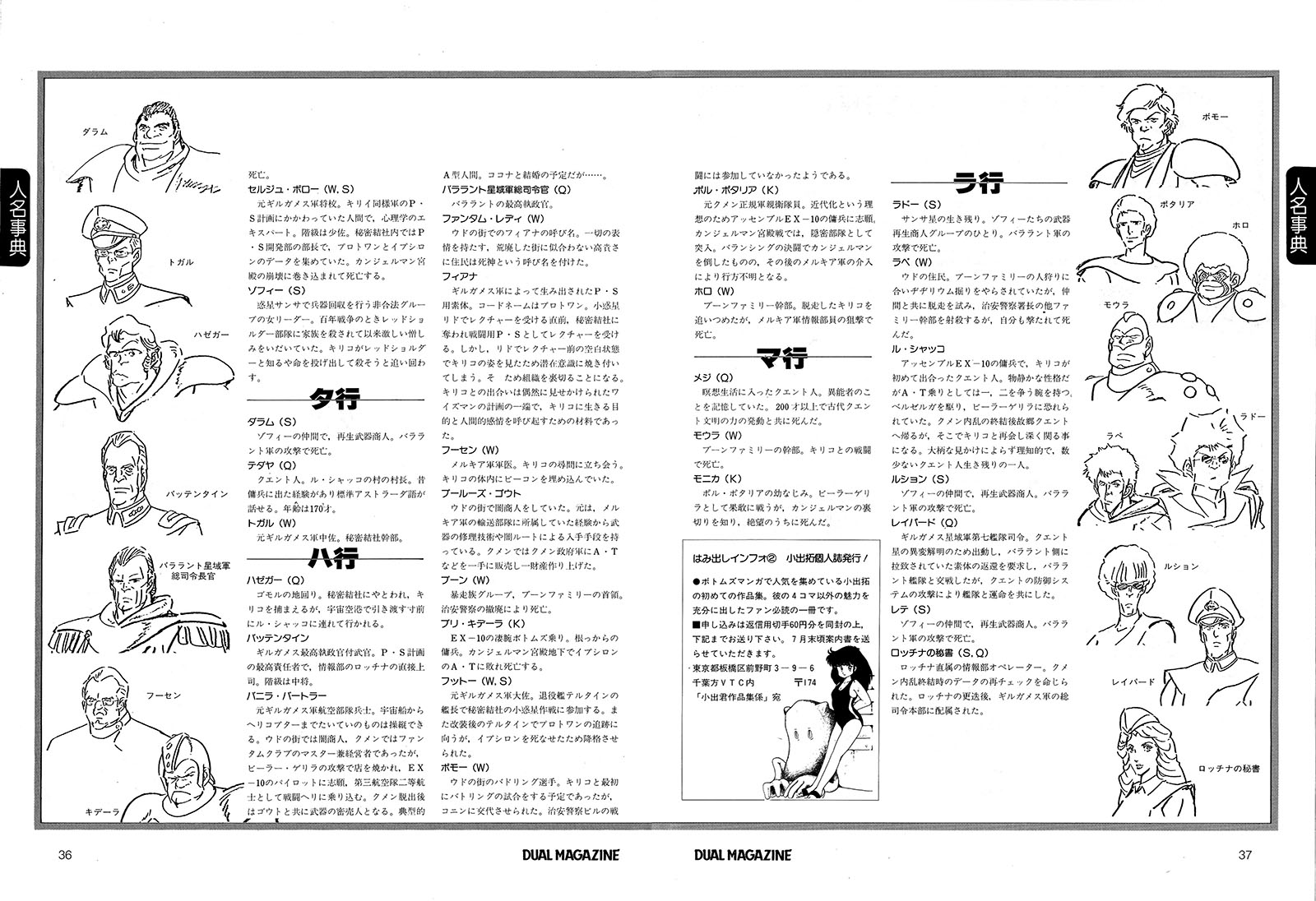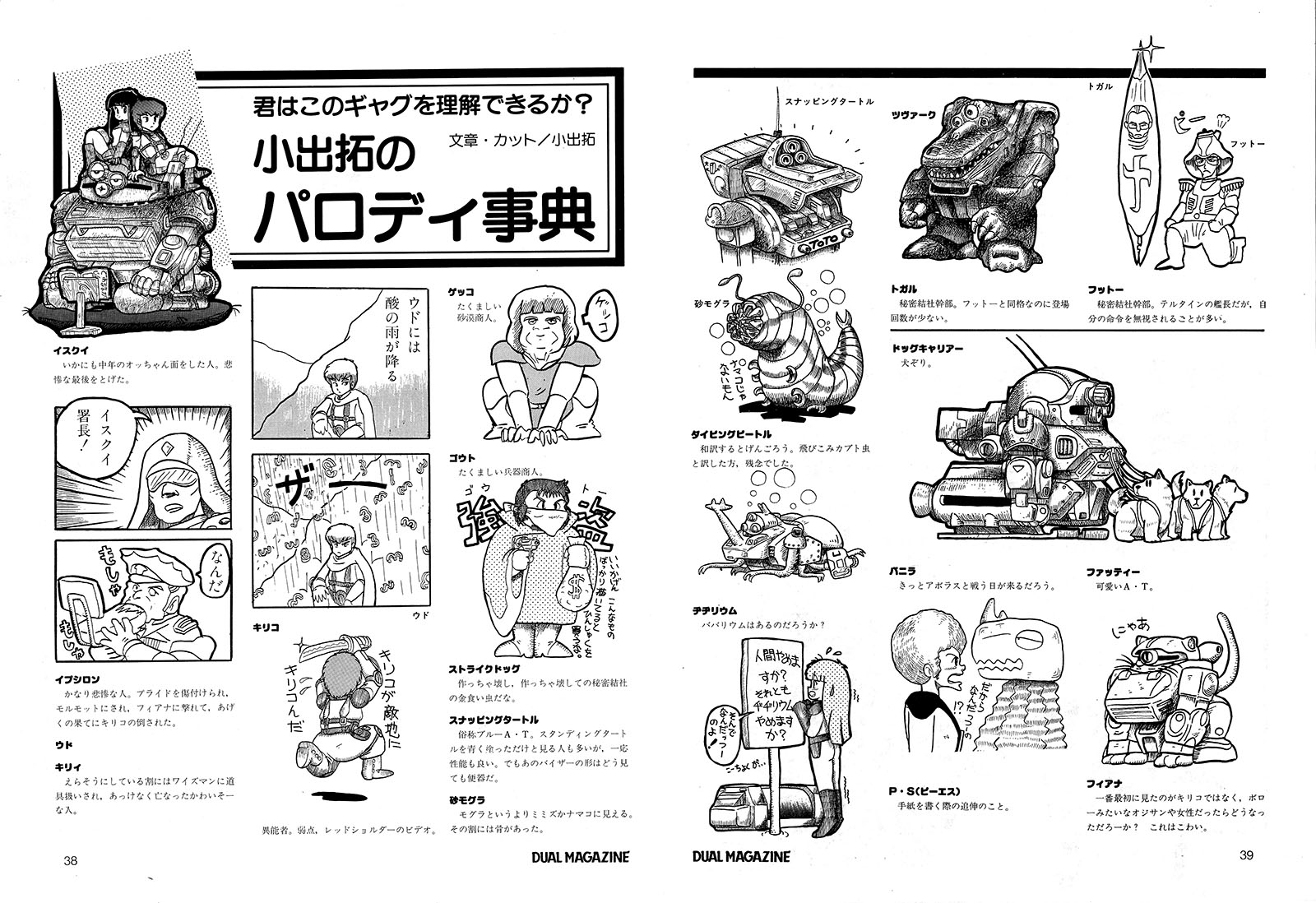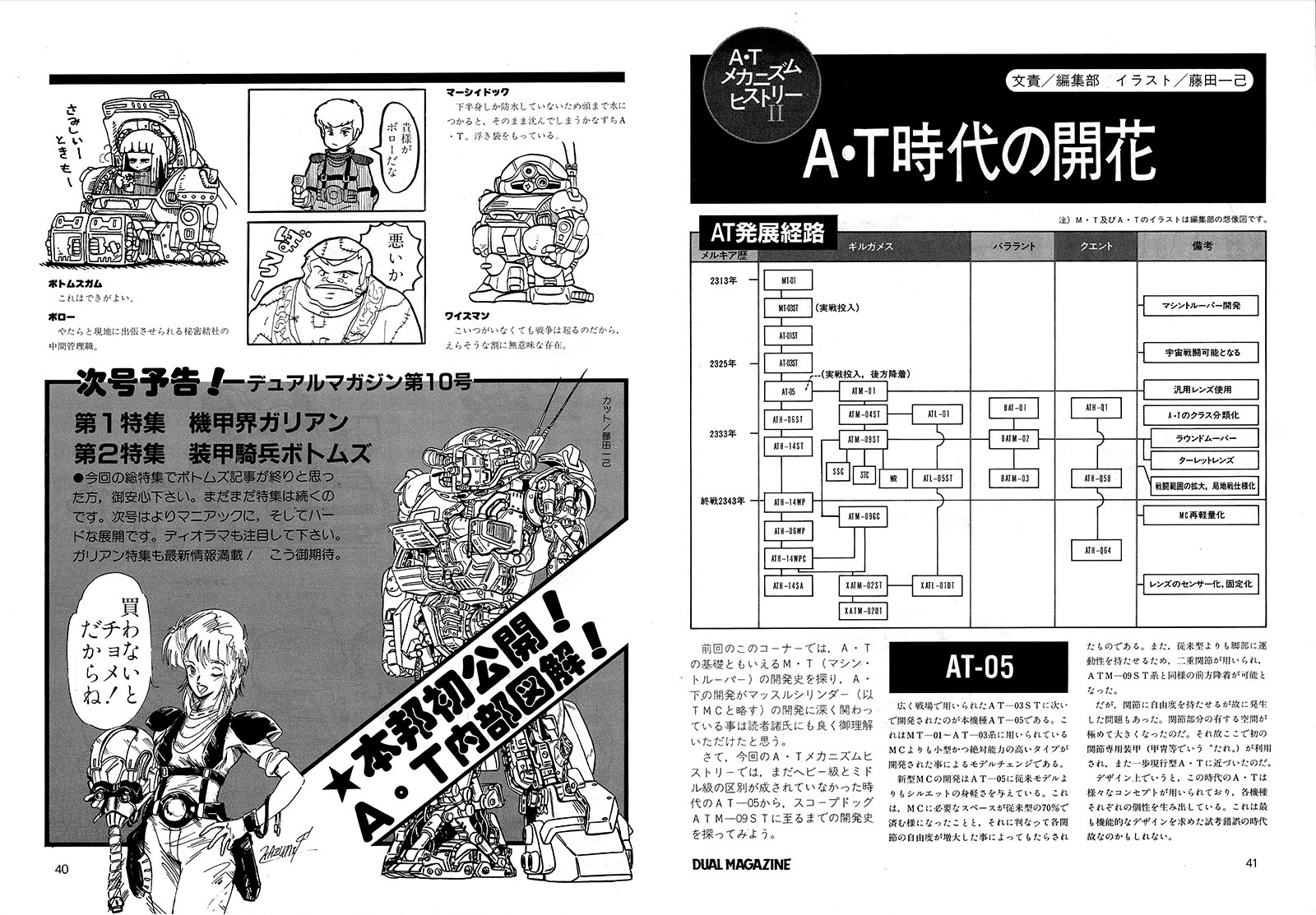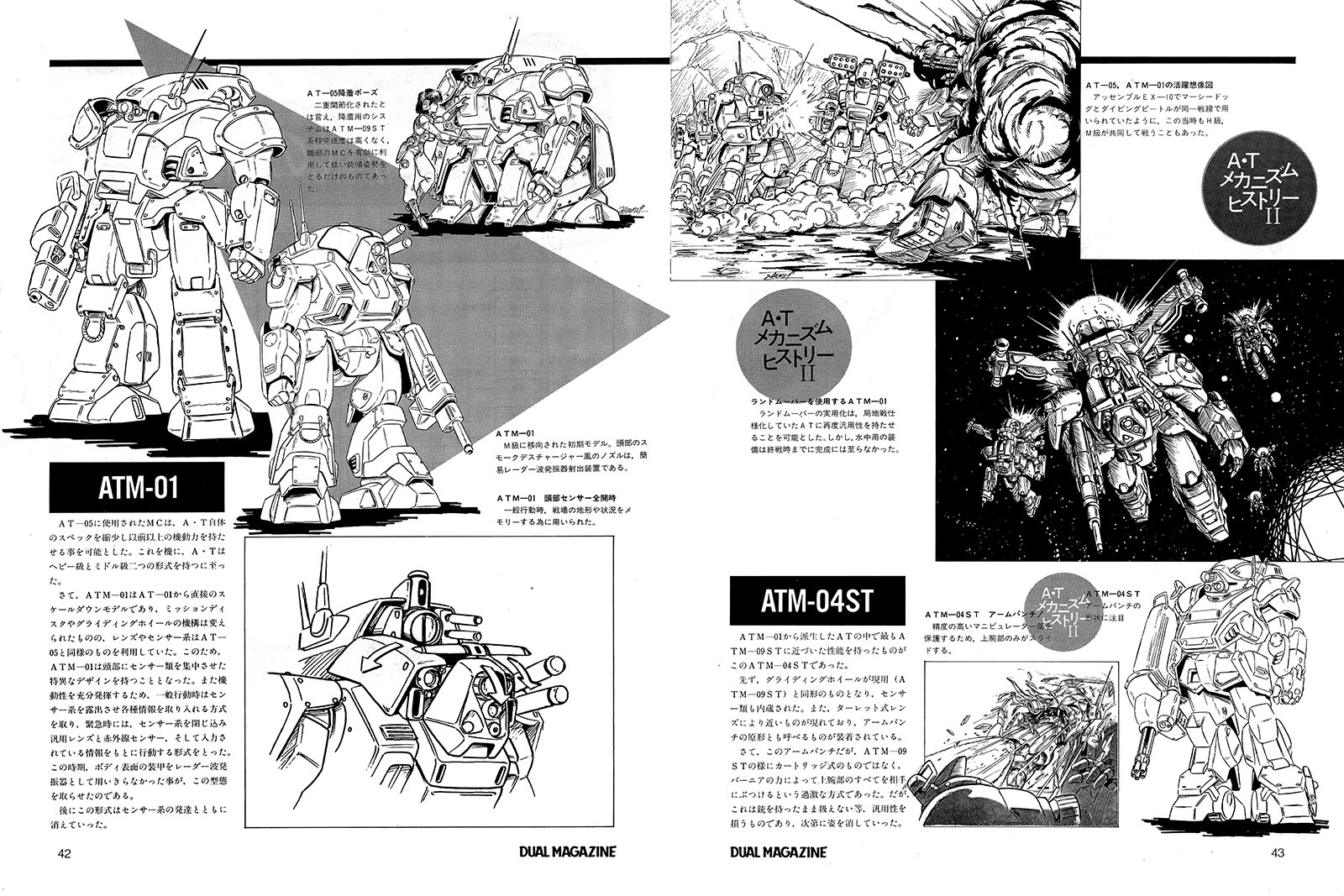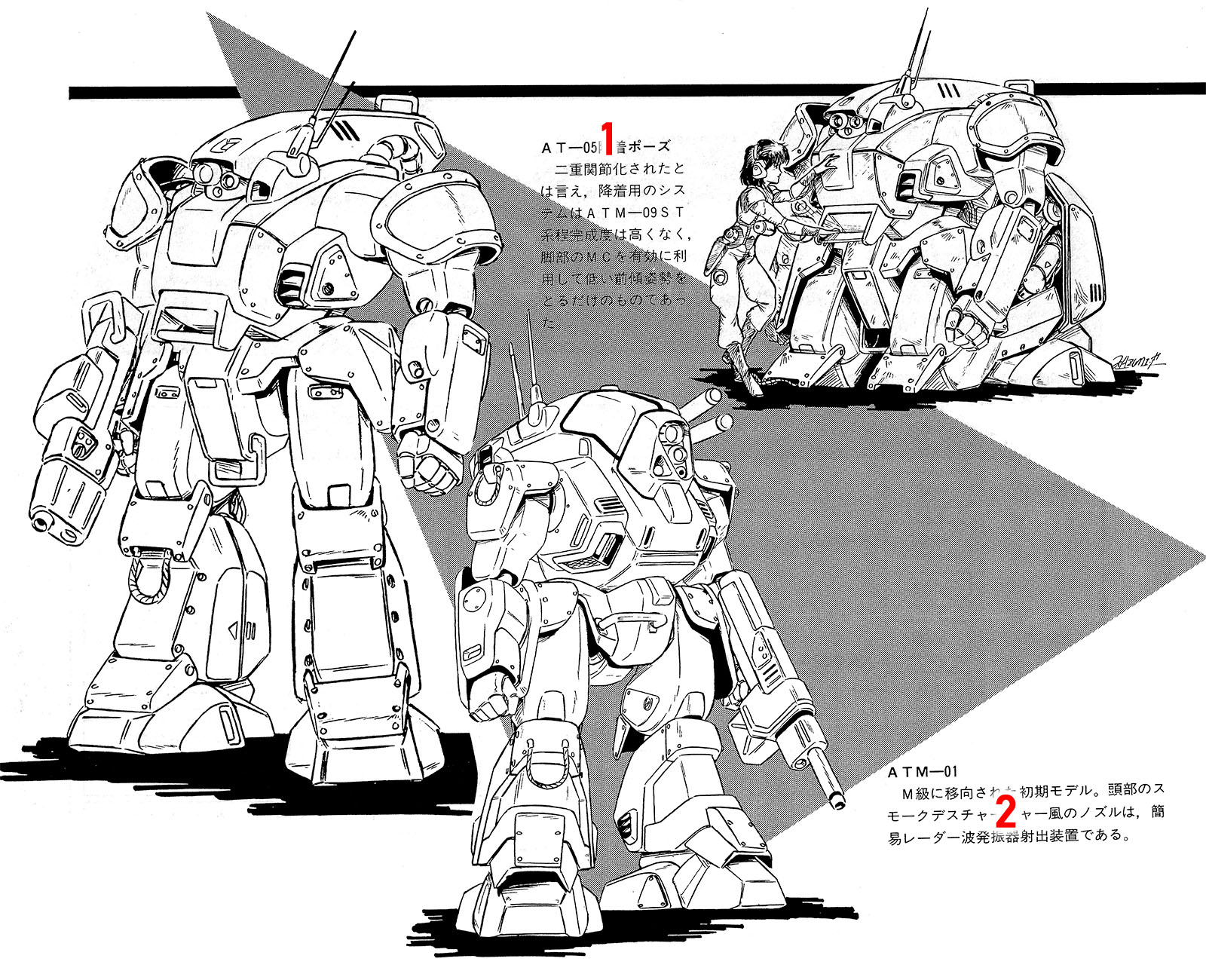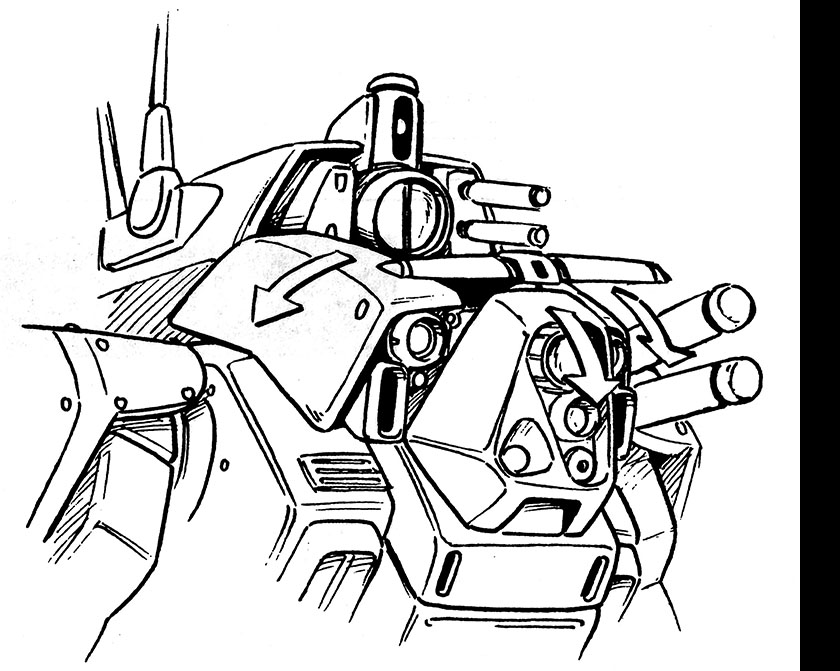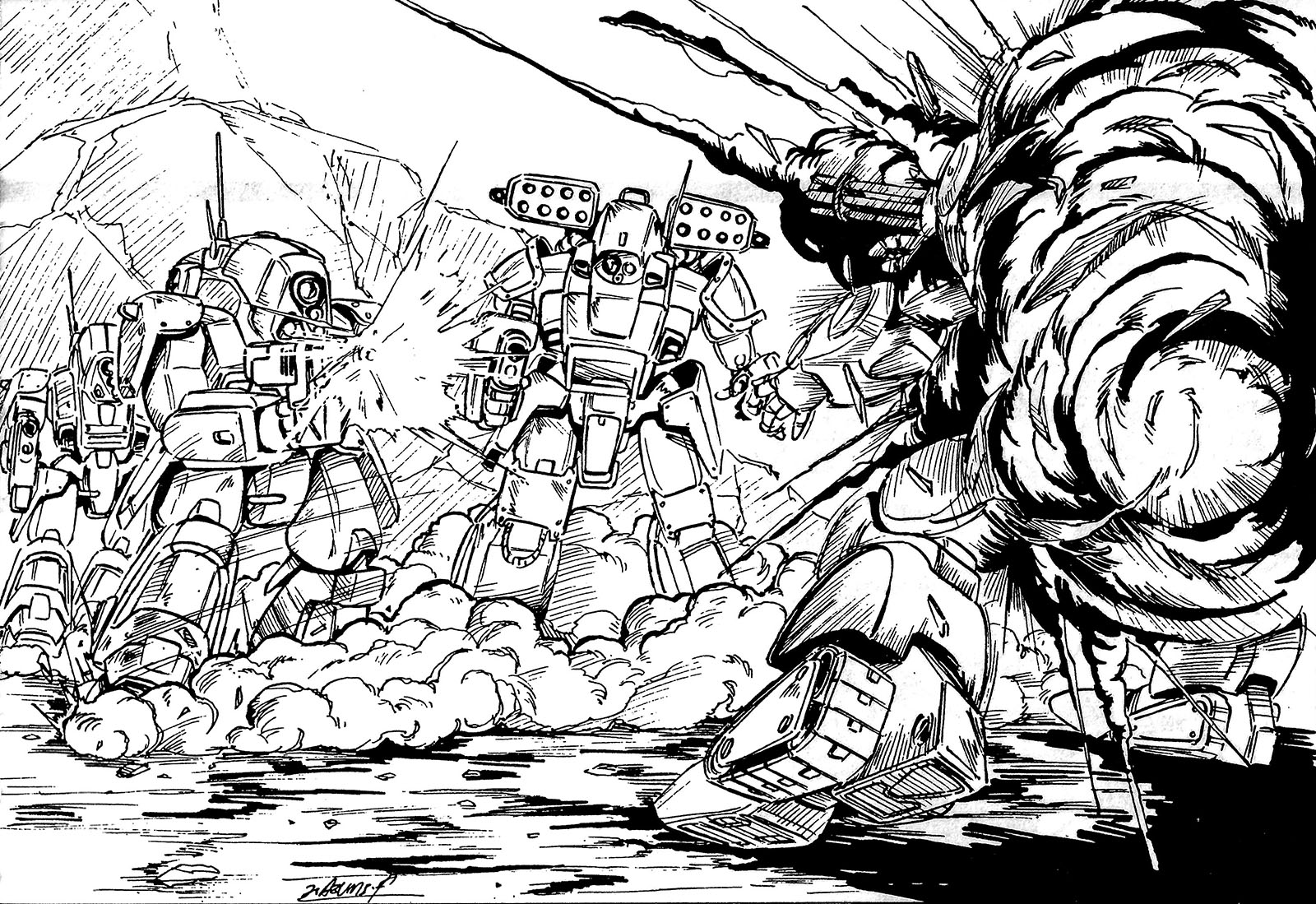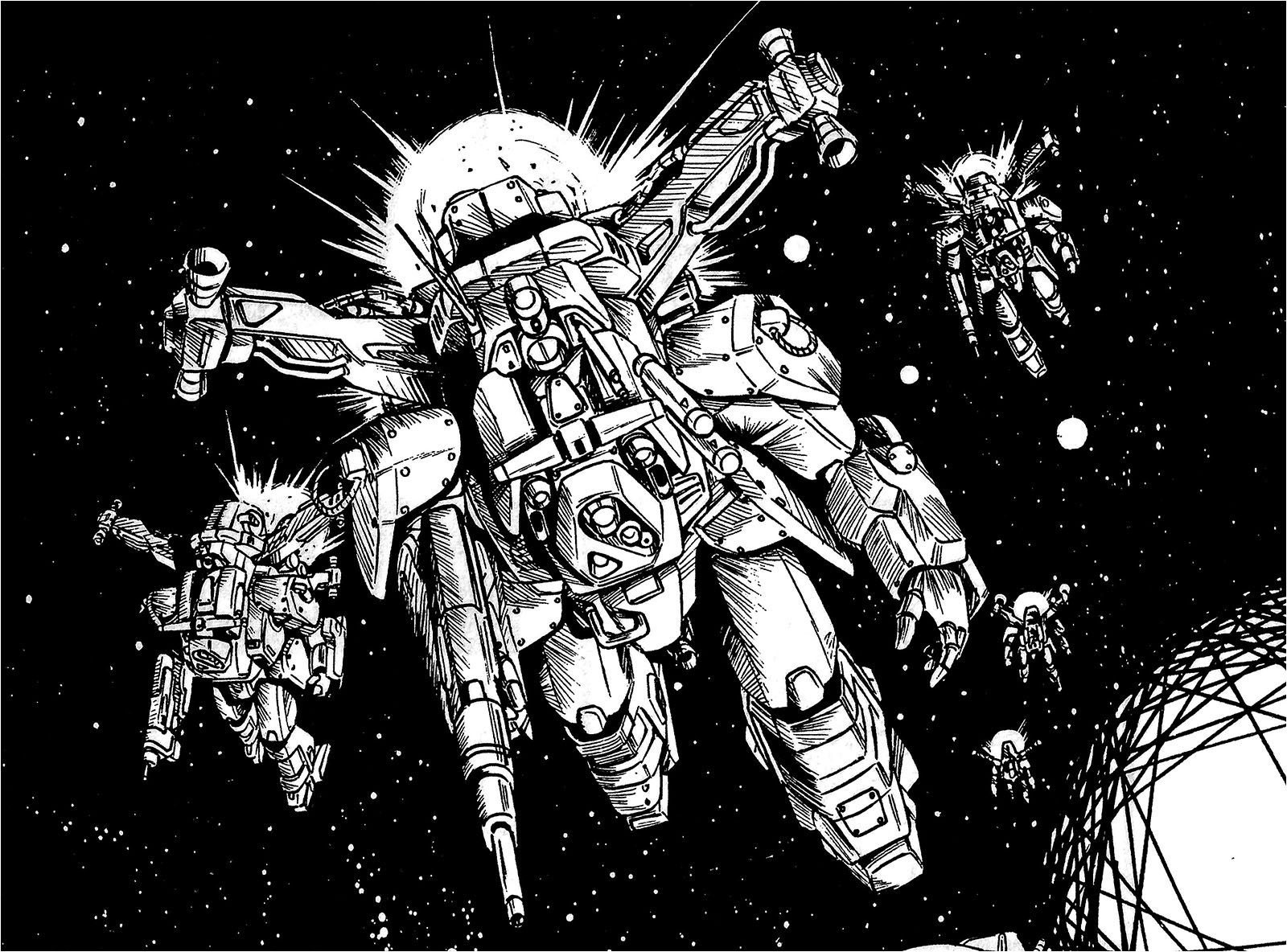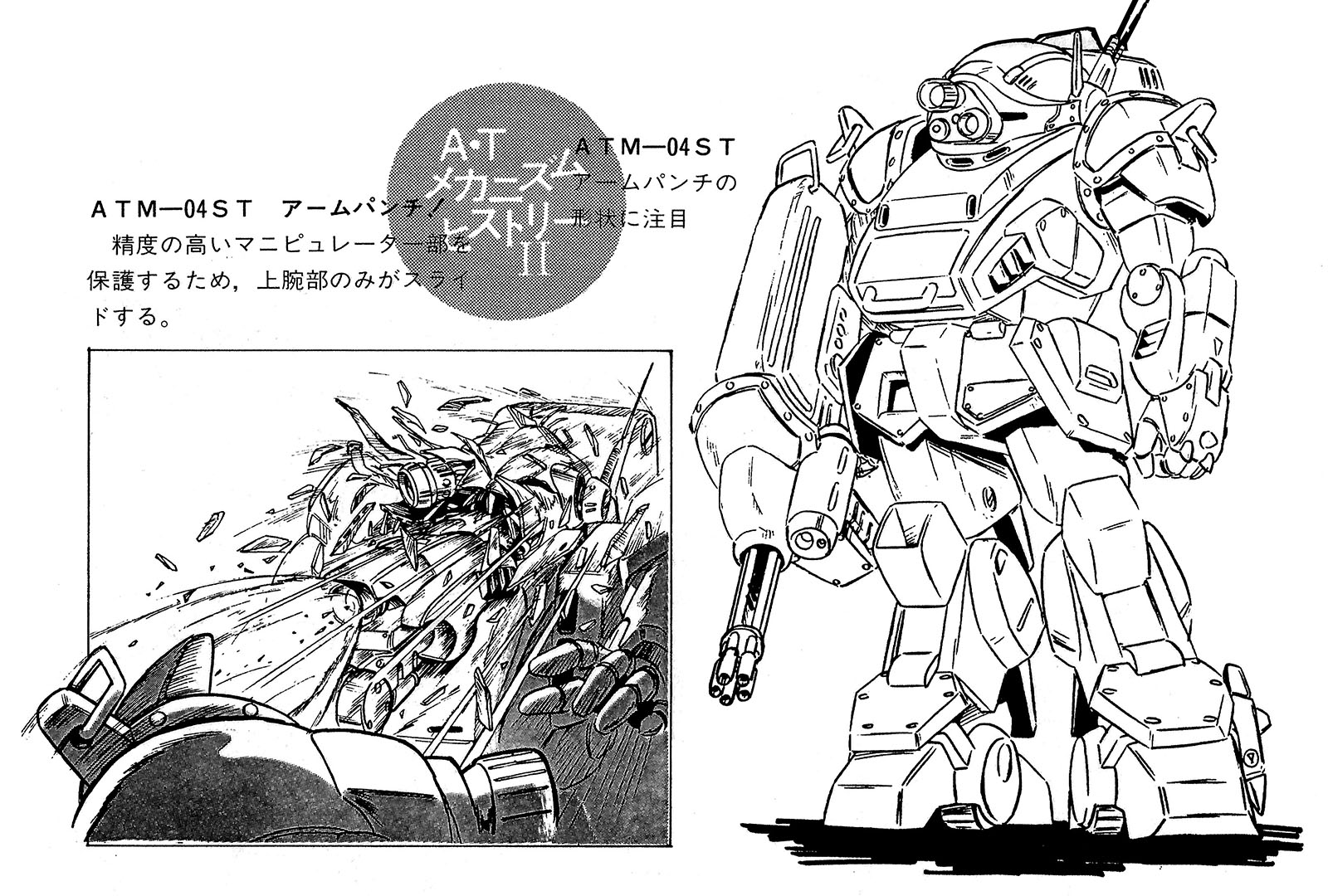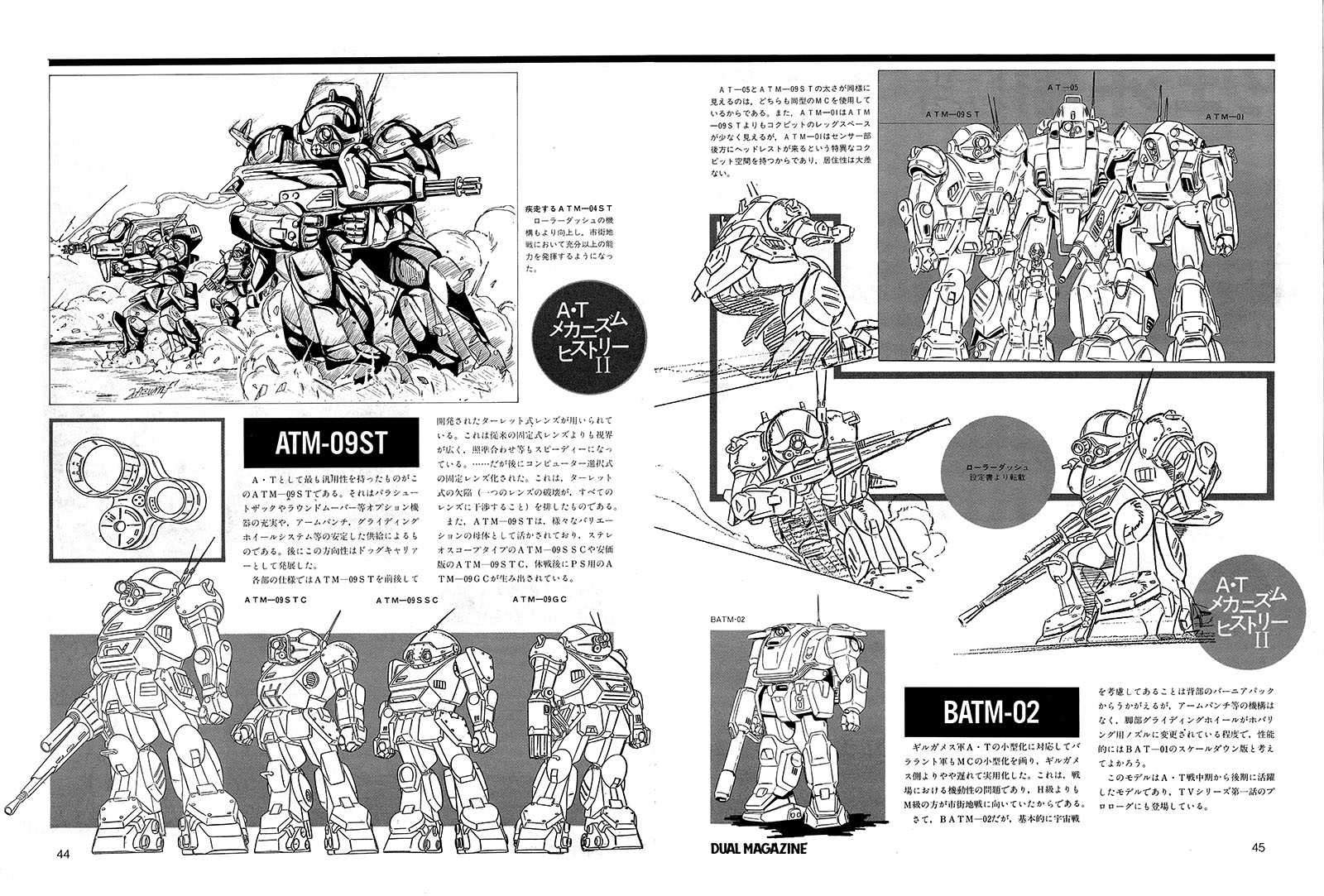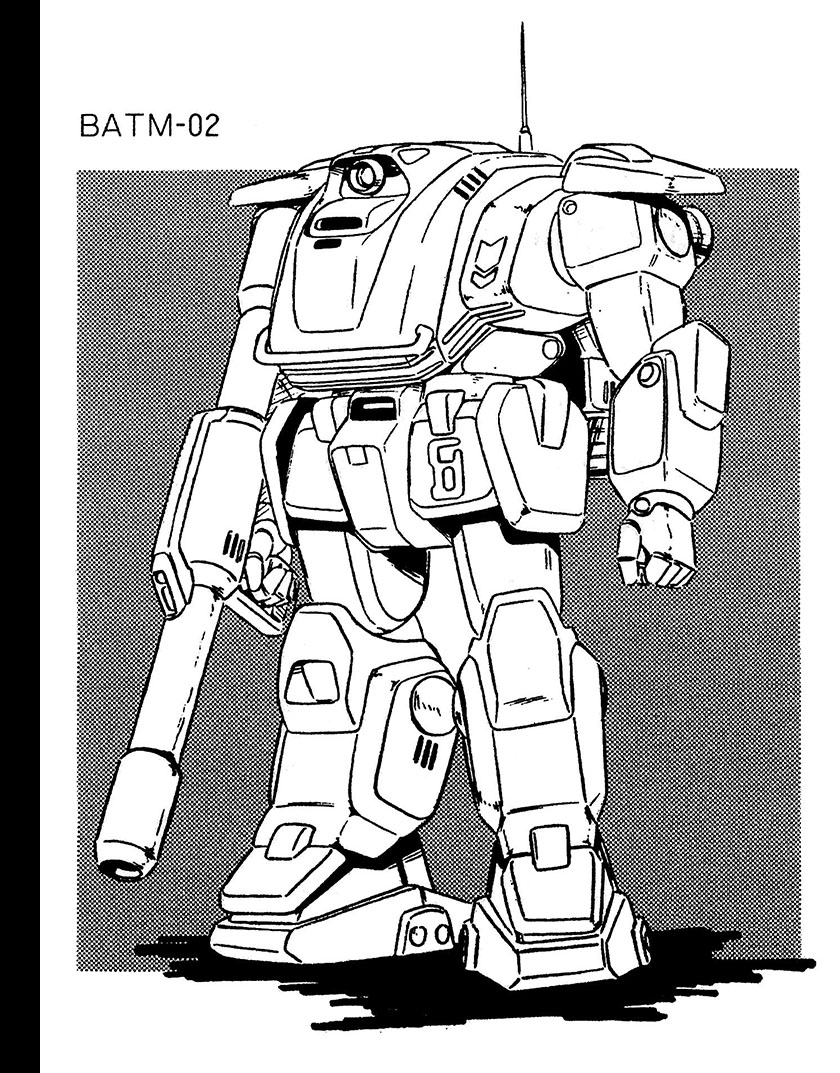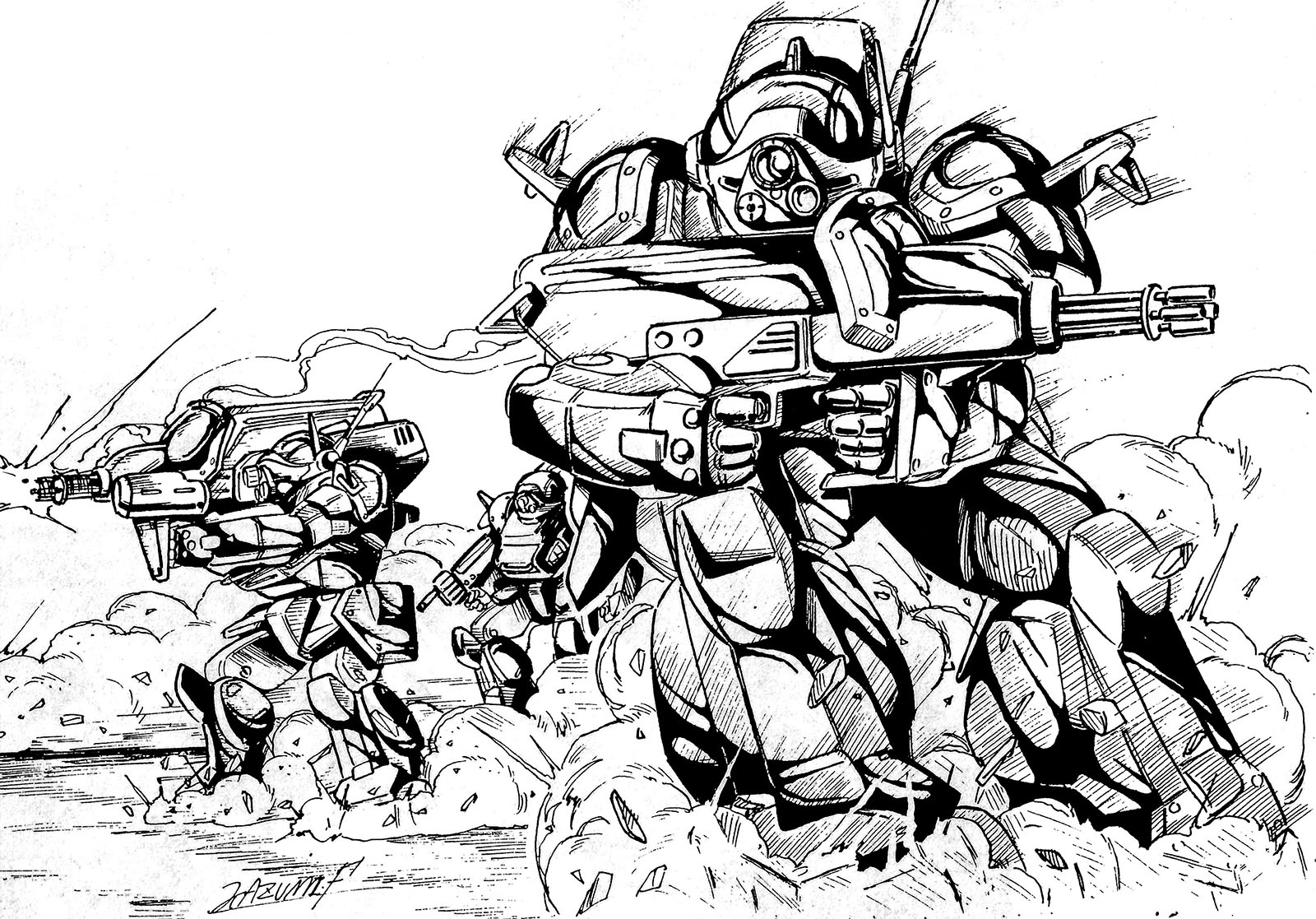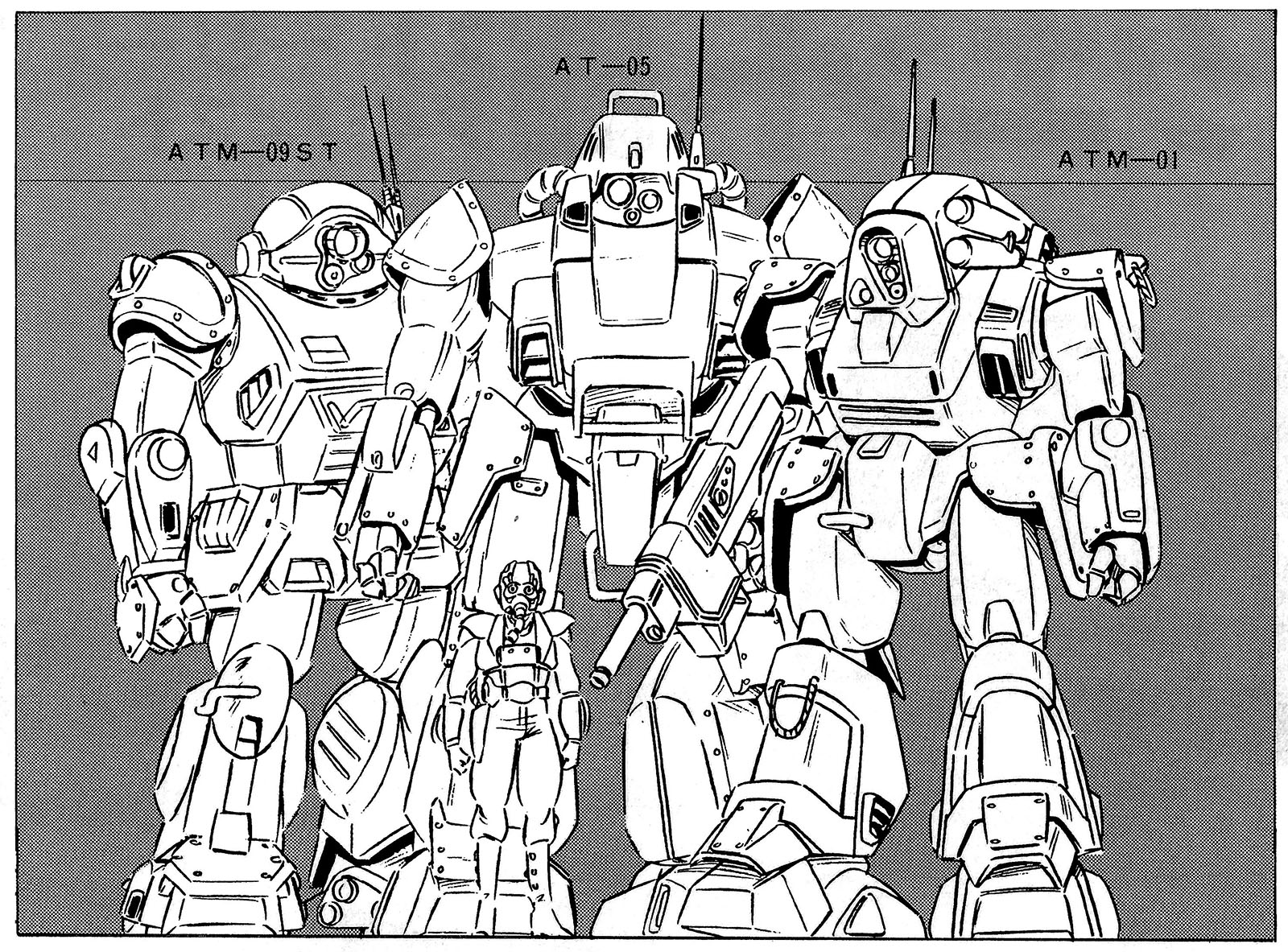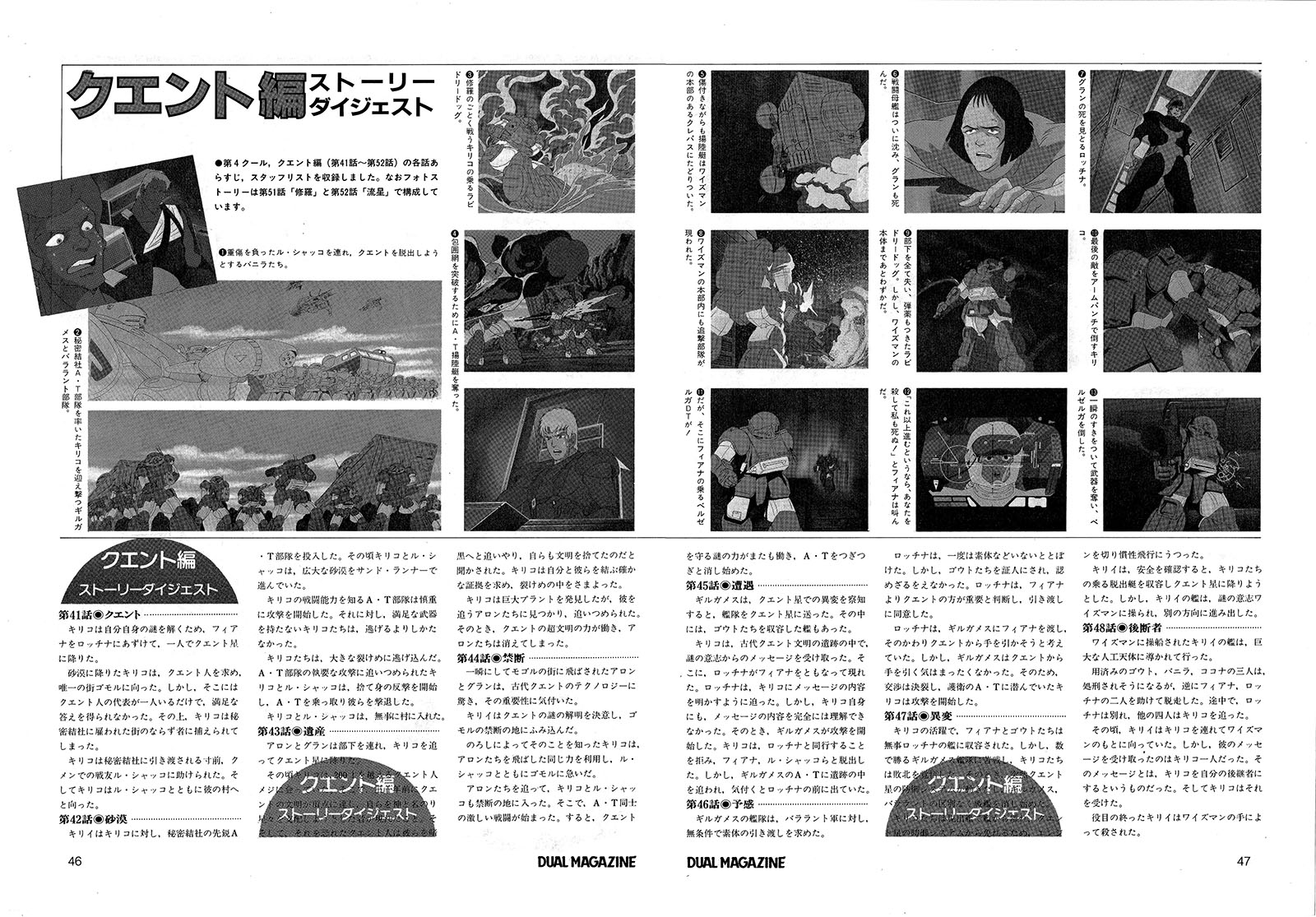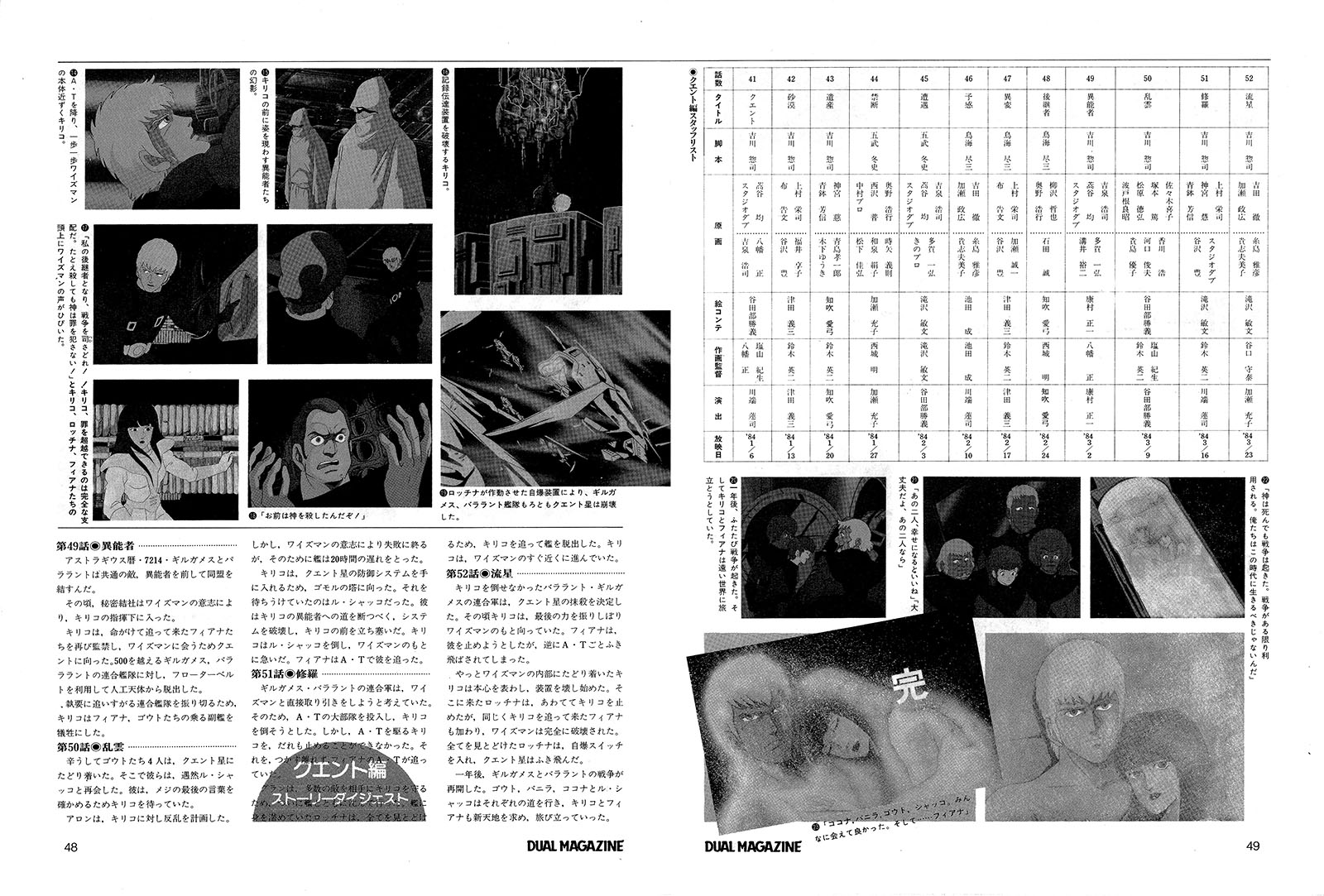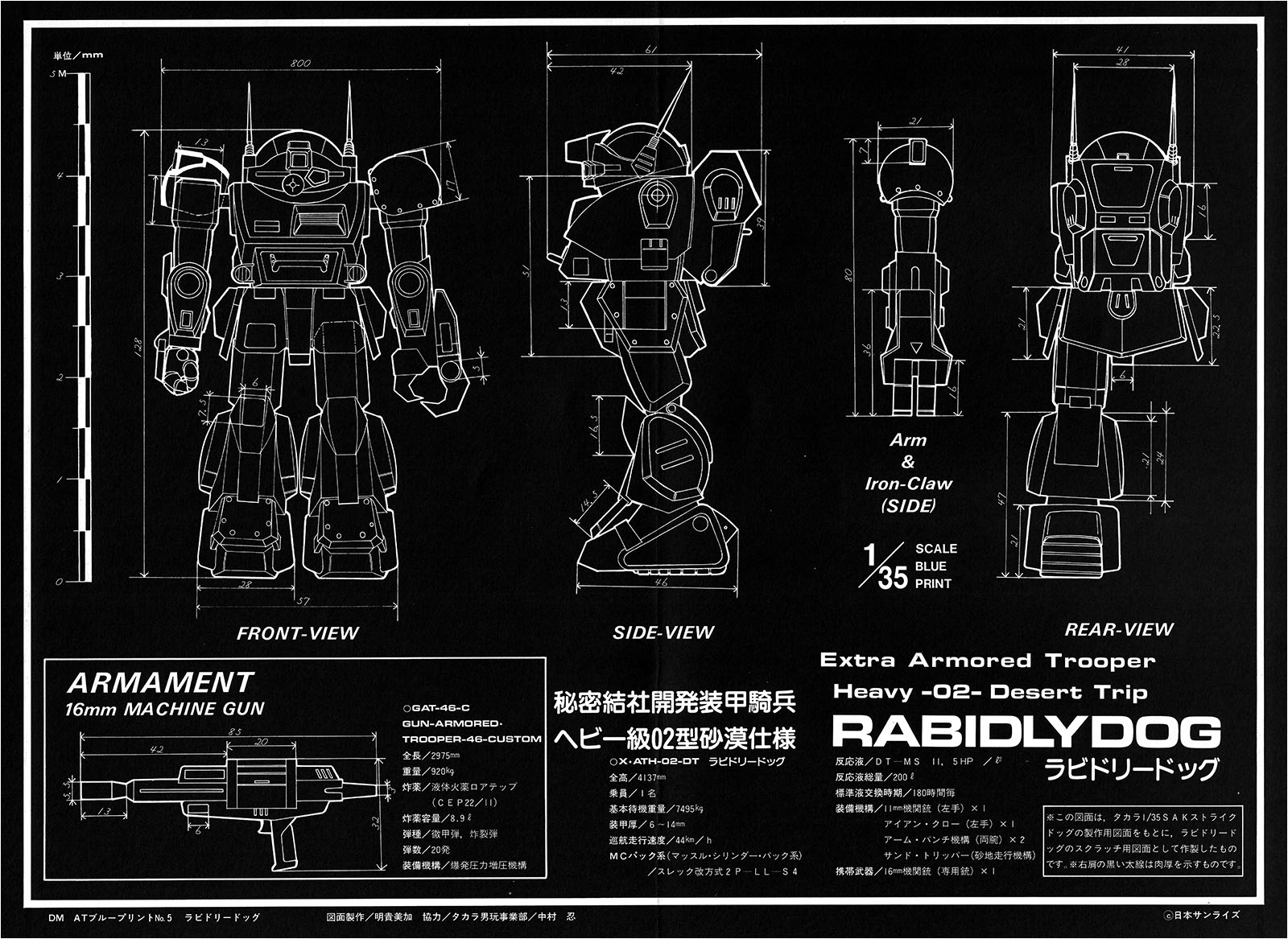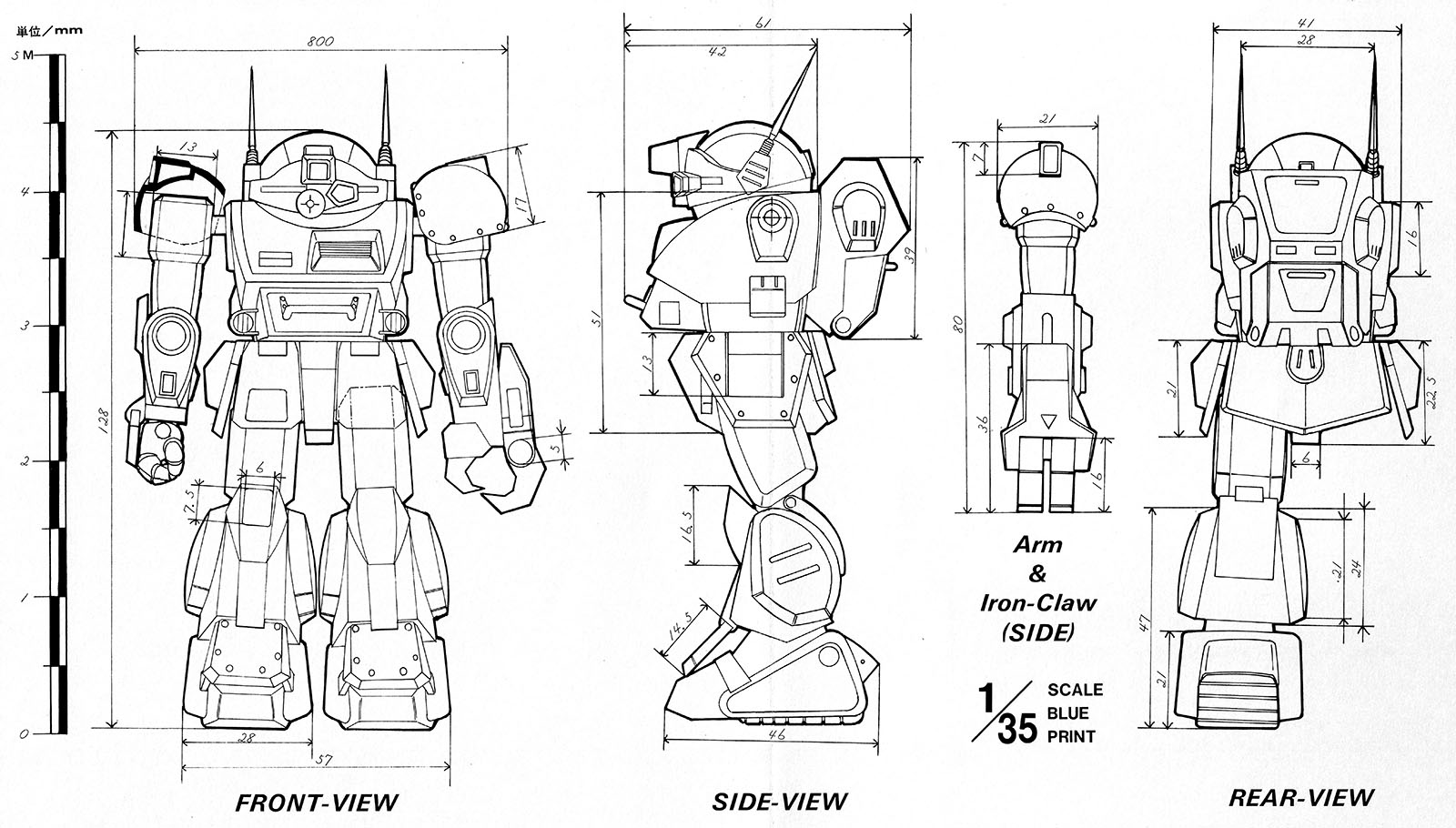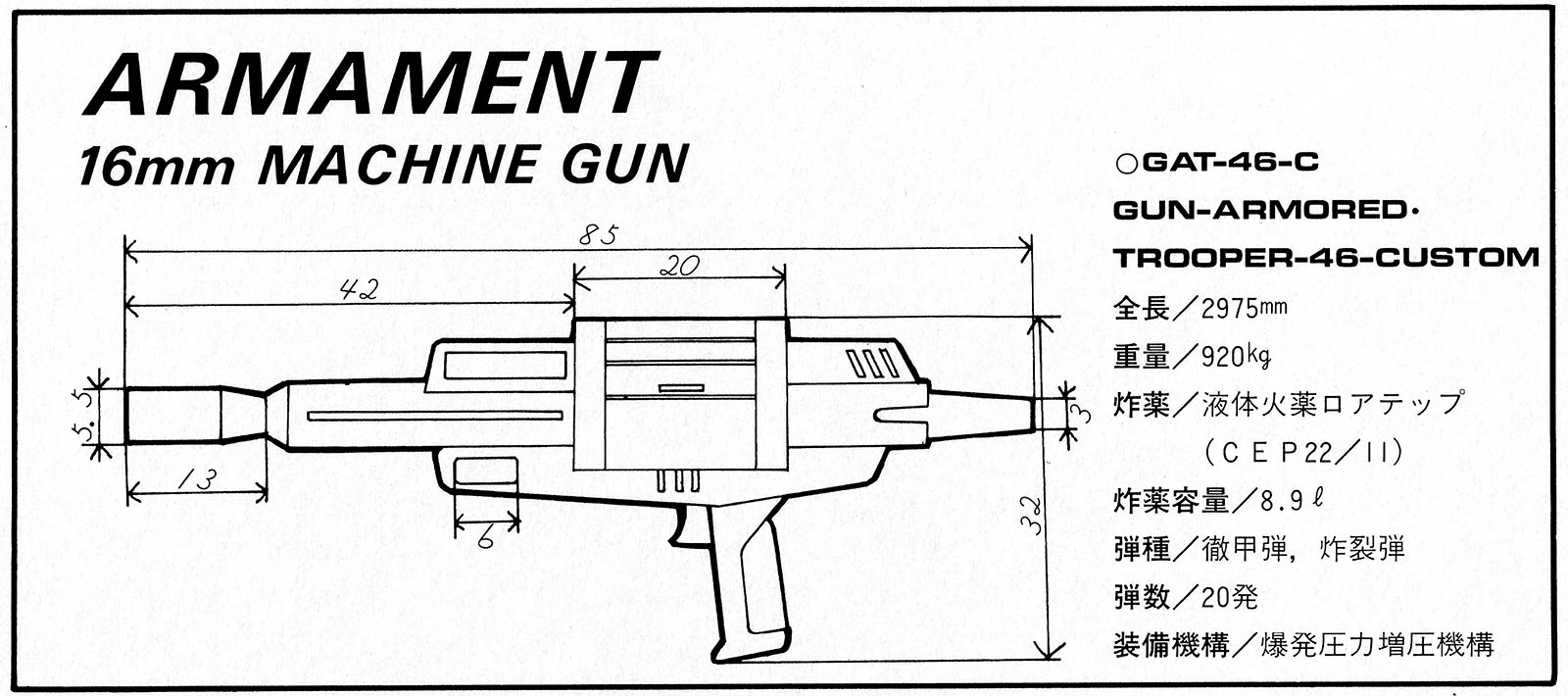Dual Magazine No. 9
The dark history of the Astragius galaxy, in the shadow of an alien being that spans 3,000 years. One man, Chirico Cuvie, was chosen as the successor of this entity, which claims to be a god that controls war. What is the path chosen by Chirico, “The man who killed God?”
Scratch model special feature
This time, we present a collection of A.T. scratch models that were not released in the SAK series. Please refer to the previous pages for diorama photos.
Scratch models are not very common, but they are very valuable in the sense that they are the only one in the world. Since many of Votoms’ later A.T.s have not been made as model kits, many people have been trying to scratch-build them, including DM readers. They are now appearing in the Okawara Awards and in-store contests. Don’t think of the models introduced this time as the best; we hope that readers will also produce better ones.
Rabidlydog
Rabidlydog was prepared by Wiseman for Chirico based on the A.T. development data of the Secret Society. it is a mass-produced advanced version of the Strikedog, equipped with desert warfare equipment for use on the planet Quent.
This is a semi-scratch model based on the 1/35 SAK Strikedog.
No. 9 VIM Produced by Shinobu Nakamura
Zwerg
A lightweight A.T. developed by the Secret Society. Both arms are equipped with 11mm triple-barrel machine guns. It also has the Sandroader option for high-speed running in the desert.
This is a 1/30 scale full scratch model based on the blueprint published in issue 8. Three models were made based on the prototype.
No. 9 V2M produced by Isao Kijima
Dog Carrier
This is a Scopedog equipped with a booster rocket for space assault. In the story, it was used for high-speed desert warfare. The carrier part can be separated and act independently.
The A.T.’s main body can pose in downform mode. The carrier is a full scratch model made of pla-plate and acrylic rods.
No. 9 V3M Fabricated by Teruaki Saiki (MA-MEZO)
This corner is an encyclopedic description of the world of Armored Trooper Votoms. We mainly focus on content that appeared in the TV series. However, we have added our own editorial opinions to the concepts from Nippon Sunrise. This is intended to help the reader understand the world of the work as a whole. Therefore, we understand that some readers may feel some discomfort with some of the descriptions. We hope you will judge it as another way of looking at Votoms.
Parody encyclopedia
A.T. Mechanism History II
The Flowering of the A.T. Era
Text/Editorial Department
Illustrations/Kazumi Fujita
In the previous issue, we explored the development history of M.T. (Machine Trooper), which can be regarded as the foundation of A.T. You may have understood well that the development of the A.T. was deeply related to the development of the muscle cylinder (hereinafter abbreviated as MC).
This time, we will start from the AT-05, when the distinction between heavy and middle class was not yet made, and explore development history leading up to the Scopedog ATM-09-ST.
AT-05
The AT-05 was developed after the AT-03-ST, which was widely used in the battlefield. This was a model change due to the development of a type that was smaller and had higher performance than the MC used in the MT-01 to AT-03 series.
The development of the new MC gave the AT-05 a smaller silhouette than the previous model. This was due to the fact that the space required for MCs was now only 70% that that of the conventional type, giving the new MC a greater degree of freedom at each joint. In addition, double joints were used to provide more mobility and flexibility to the legs. The forward-landing “downform” seen in the ATM-09-ST series was now possible.
However, a problem arose; because the joints had a greater degree of freedom, the space occupied by joints became very large. Therefore, the first joint-specific armor was used here. This was another step closer to the current A.T. model.
In terms of design, A.T.s of this period used various concepts. Each model had its own individuality. This may have been due to the period of trial and error in pursuit of the most functional design.
ATM-01
The MC used in AT-05 made it possible to reduce the A.T.’s size specs and make it more mobile. This led to the A.T. having two types, the heavy class and the middle class. ATM-01 was a direct scale-down from AT-01.
Although the mission disc and gliding wheel mechanisms were changed, the lenses and sensor system were the same as those of AT-05. Therefore, the ATM-01 had a unique design in which the sensors were concentrated in the head.
In addition, in order to demonstrate mobility, the sensor system was exposed during general operations to receive various types of information. In an emergency, the sensor system was closed and the robot acted based on the input of a general-purpose lens, an infrared sensor, and peripheral information.
During this period, the armor on the surface of the body could not be used as a radar wave oscillator, which is what led to this form. Later, this process disappeared with the development of sensor systems.
ATM-04-ST
Among the A.T. models derived from ATM-01, the ATM-04-ST had the closest performance to that of ATM-09-ST. First, the gliding wheel was the same type, and sensors were built in. Something closer to a turret-type lens appeared, and it was also equipped with what can be called a prototype of the arm punch.
This version of the punch was not a cartridge type like the ATM-09-ST. Instead, it was a radical method in which the entire upper arm was struck against the opponent by the force of a vernier. However, this type of punch could not be deployed with a gun in one’s hand, which spoiled its versatility, and it gradually disappeared.
1. AT-05 landing pose
Although the AT-05 was double-jointed, the landing system is not as complete as the ATM-09-ST series. It was only designed to adopt a low forward leaning posture by effectively utilizing the MC in the legs.
2. ATM-01
An early model that was moved to the M class. The smoke discharger-like nozzle on the head was a simple radar wave oscillator injection device.
(at left) ATM-01 head sensor fully open
Used during general operations, to memorize battlefield terrain and conditions.
AT-05 and ATM-01 in action
Just as Marshydogs and Diving Beetles were used at the same front in Assemble EX-10, H- and M-class units sometimes fought together even in these earlier times.
ATM-01 with Round Mover
The practical use of the round mover enabled the A.T., which had been designed for local warfare, to become more versatile. However, underwater equipment was not completed by the end of the war.
ATM-04-ST
Note the shape of the ATM-04-ST Arm Punch.
ATM-04-ST Arm Punch!
Only the upper arm slides in order to protect the highly precise manipulator.
ATM-09-ST
The ATM-09-ST is the most versatile A.T. with a full range of optional equipment such as a parachute sack and a round mover, as well as a wide range of optional equipment such as an arm punch, a gliding wheel system, etc. Later, this direction led to development of the dog carrier.
In terms of specifications of each part, it uses a turret-type lens with a wider field of view than the fixed lens, making it faster to adjust for input. However, it was later converted to a computer-selectable fixed lens to eliminate the deficits of the turret-type (destruction of one lens interferes with all the lenses).
The ATM-09-ST has been utilized as a base model for variations: the stereo scope type (ATM-09-SSC) and the less expensive version (ATM-09-STC) were developed. After the armistice, ATM-09-GC was produced for use by a Perfect Soldier.
BATM-02
In response to the downsizing of Gilgameth’s A.T., the Balarant Army also made efforts to reduce the size of its MC. It was put into practical use somewhat later than the Gilgameth side due to the challenge of mobility on the battlefield. This was because the M-class was better suited to urban warfare than the H-class.
The vernier pack on the back suggests that it is basically designed for space battles, but it has no arm punch or other mechanisms. The gliding wheels on the legs have been replaced with nozzles for hovering. It can be considered a scaled-down version of BAT-01 in terms of performance.
This model was active from the middle to the end of the war. It appears in the prologue of the first episode of the TV series.
ATM-04-ST running at full speed
The roller dash mechanism was improved and became more than adequate for urban warfare.
The similarity in thickness between the AT-05 and ATM-09-ST is due to the fact that both use the same type of MC. The ATM-01 appears to have less leg space in the cockpit since it has a unique cockpit space with the headrest located behind the sensor section. There is no significant difference in comfort.
Quent series story digest
Secret Society developed Armored Trooper
Heavy class 02 desert specification
X-ATH-02-DT Rabidlydog
Height: 4137mm
Crew: 1
Basic standby weight: 7495kg
Armor Thickness: 6-14mm
Cruising speed: 44km/h
Muscle Cylinder pack: Slake modified Slake system 2P-LL-S4
Reaction liquid: DT-MS 11, 5hp/l2
Total reaction liquid: 200 liters
Standard liquid replacement interval: Every 180 hours
Equipment:
11mm machine gun (left hand) x 1
Iron Claw (left hand) x 1
Arm Punch mechanism (both arms) x 2
Sand Tripper
Weapon: 16mm machine gun (dedicated gun) x 1
These drawings were made for a Rabidlydog scratch build based on production drawings for Takara’s 1/35 SAK Strikedog.
The thick black line on the right shoulder indicates the armor thickness.
Drawing: Mika Akitaka
Cooperation: Shinobu Nakamura, Takara Toys Division
GAT-46-C
Gun Armored Trooper-46-Custom
Overall length: 2975mm
Weight: 920kg
Explosive: liquid explosive Roatep (CEP 22/11)
Explosive capacity: 8.9 liters
Ammunition type: Armor-piercing, explosive
Number of bullets: 20
Equipment: Explosion pressure increasing mechanism

